As I mentioned in Part 1 of this series of posts, 2019 has been a rather unprecedented year in writing about audio and music, with the year-end number of blog posts published at Jeff's Place coming in at 210, and 5 feature reviews for Positive Feedback.
I feel really fortunate to have had so much to tell you about in 2019, and if I'm reading 2020 correctly it is looking to be similar, with reviewing committments clear out into the third quarter of 2020 already.
While it is somewhat inadvertent on my part - as I just enjoy writing about audio topics for you that interest me - the combination of blogging here at Jeff's Place and writing feature audio reviews for Positive Feedback has become very popular with readers, as well as audio manufacturers who are requesting reviews.
This combination of blogging and writing feature audio reviews gives you a lot more information on any given audio topic than any stand alone review can, and over a much longer period. That means that you get a much better idea of what any given piece of audio equipment is like to live with over a longer term, which provides insights about it that you just can't get any other way than by the passage of time.
I think that provides you a useful service, it also makes it more fun for me to write about, and assuming the audio product being written about passes the test of time, it provides a lot of Positive Visibility for those sending audio goodies in for review.
As I reflected back upon 2019 in Part 2, I realized that as much as I enjoy writing about audio and music for you, that it was the people that I had visited, had visited me, and interacted with from afar, that made for the most memorable aspects of 2019. This is truly a wonderful hobby for bringing together people who love music and audio, and I feel very fortunate to be a part of it, and to be able to share it with you.
In closing out my Part 2 blog post, I promised to continue on in Part 3 with my stories of the ongoing "hot topics" of 2019, my key audio insights from 2019, my favorite music discoveries in 2019, my 2020 New Year's Resolutions, what's coming up at Jeff's Place in 2020, and other cool stuff - so let's get on with it!
The On-Going "Hot Topics" of 2019
The products of Duelund Coherent Audio have been an ongoing "hot topic" in 2019. I suppose to be completely accurate I should say that Duelund Coherent Audio has not been a "hot topic" just in 2019, but in reality Duelund Coherent Audio has been an ongoing "hot topic" from all the way back in 2013 when I teamed with Frederik Carøe to bring you the Duelund-Westminster Project, which I wrote about extensively here at Jeff's Place and in the feature review for Positive Feedback.
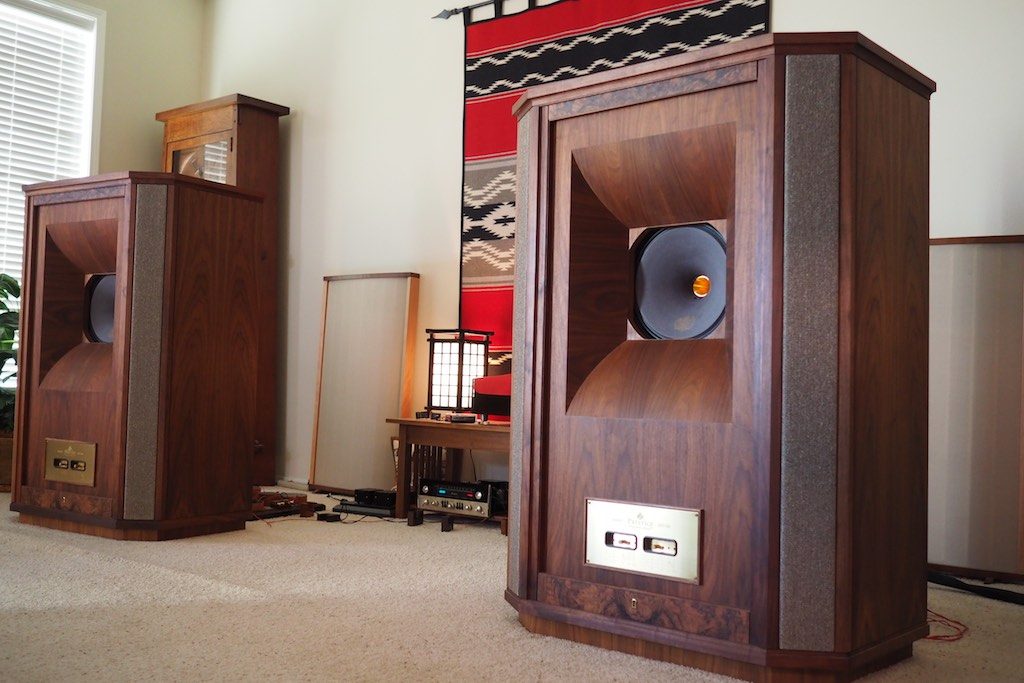
Tannoy Westminster Royal Special Edition loudspeakers with external Duelund CAST crossovers.
I remember that back in 2013 it seemed a bit frightening to me to tear into my Tannoy Westminster Royal SE loudspeakers to build them a pair of Duelund CAST crossovers composed of a combination of Duelund CAST copper & silver components, but the results were spectacular.
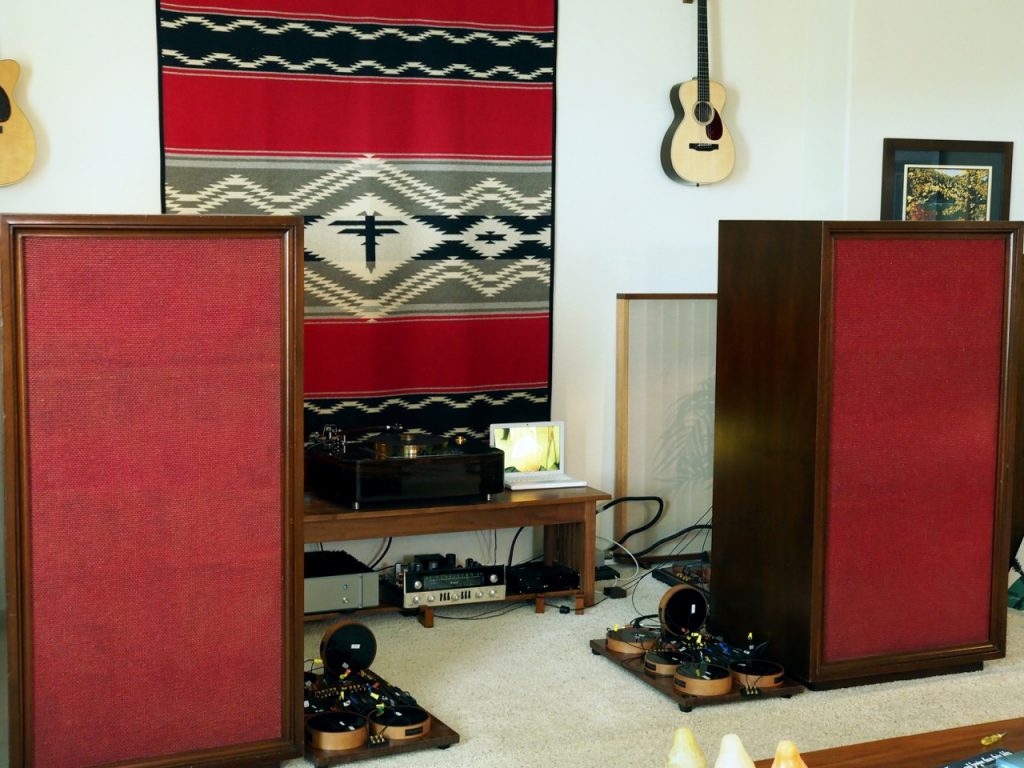
"Stokowski" Altec's with Duelund CAST tinned-copper crossovers.
Now having done the same sort of thing with the Duelund-Altec Project over 2018 and 2019, and yet again yielding spectacular results with the new line of Duelund CAST tinned-copper components in the "Stokowski" Altec's crossovers, the results of the combination have surpassed everything I could have possibly imagined, and the Duelund "hot topic" trend has continued.
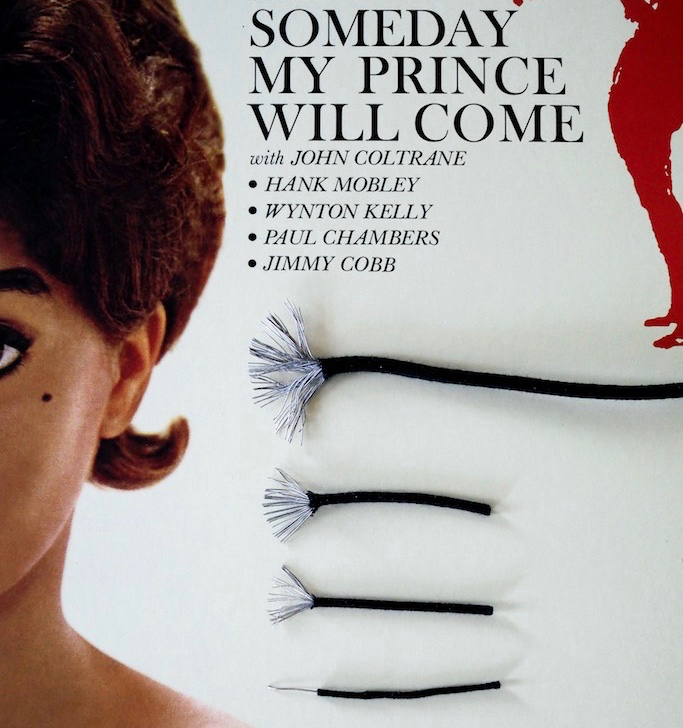
Bottom to top: DCA26GA, DCA20GA, DCA16GA, and DCA12GA tinned-copper wire.
Not only that, but back when I wrote about my experiences with vintage Western Electric WE16GA wire as speaker cables and Belden 8402 tinned-copper microphone cables as interconnects in 2015, I had no idea it would cause a revolution around the world of such momentous impact.
Those tinned-copper wire adventures sparked Frederik Carøe's imagination to go the vintage Western Electric wire one better, and he developed the Duelund Coherent Audio line of tinned-copper cables that have been a world-wide success, and brought superb tinned-copper wire performance to music lovers and audiophiles everywhere at affordable prices.
As HiFi Collective in the UK has said, the Duelund line of DCA tinned-copper wires are, "A wire born of the desire to improve upon legendary vintage Western Electric WE16GA cable, but using Duelund's philosophy of uncompromising craftsmanship and construction, sonic splendor, palpability and transparency."
The Duelund line of DCA tinned-copper wires led to my 2017 Positive Feedback feature review, An Adventure in the Art of Tone with the Duelund Coherent Audio DCA Series of Tinned-Copper Cables, Part 1, (HERE).
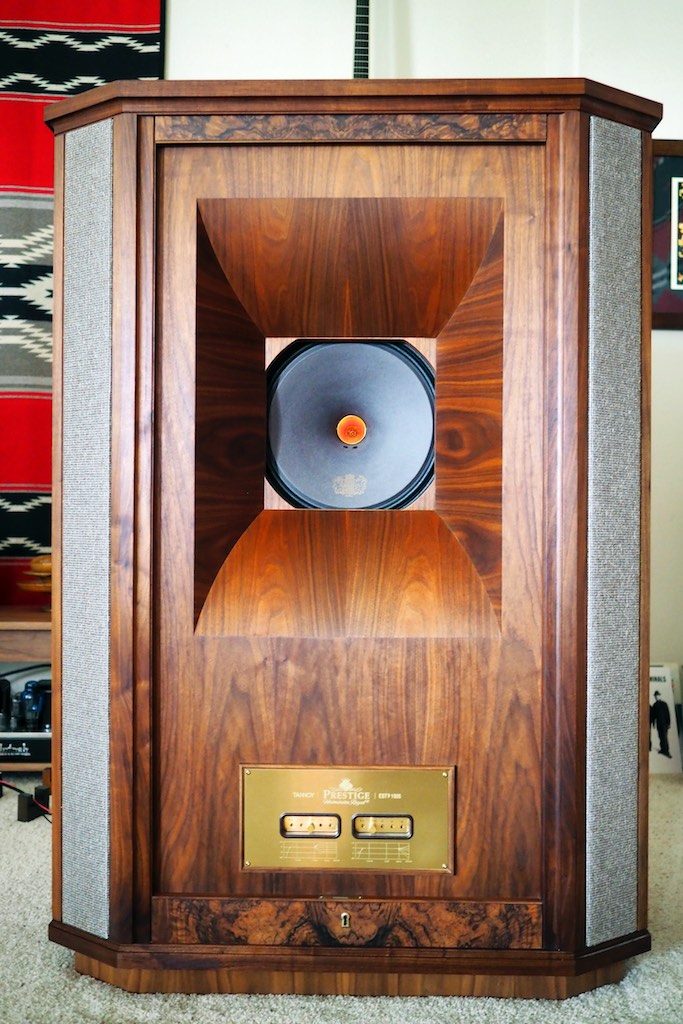
Tannoy Westminster Royal SE loudspeaker.
When I wrote Part 1 I envisioned Part 2 being a rewire of my Westminster's inside & out with the Duelund DCA cotton soaked & baked dielectric tinned-copper wire, and I had no idea that the Duelund tinned-copper cable lineup would evolve to include 600V versions of the Duelund tinned-copper wire utilizing a Duelund CAST-like material that would make it useful as component hookup wire - like you see in vintage audio and guitar amplification components - or for building power cords.
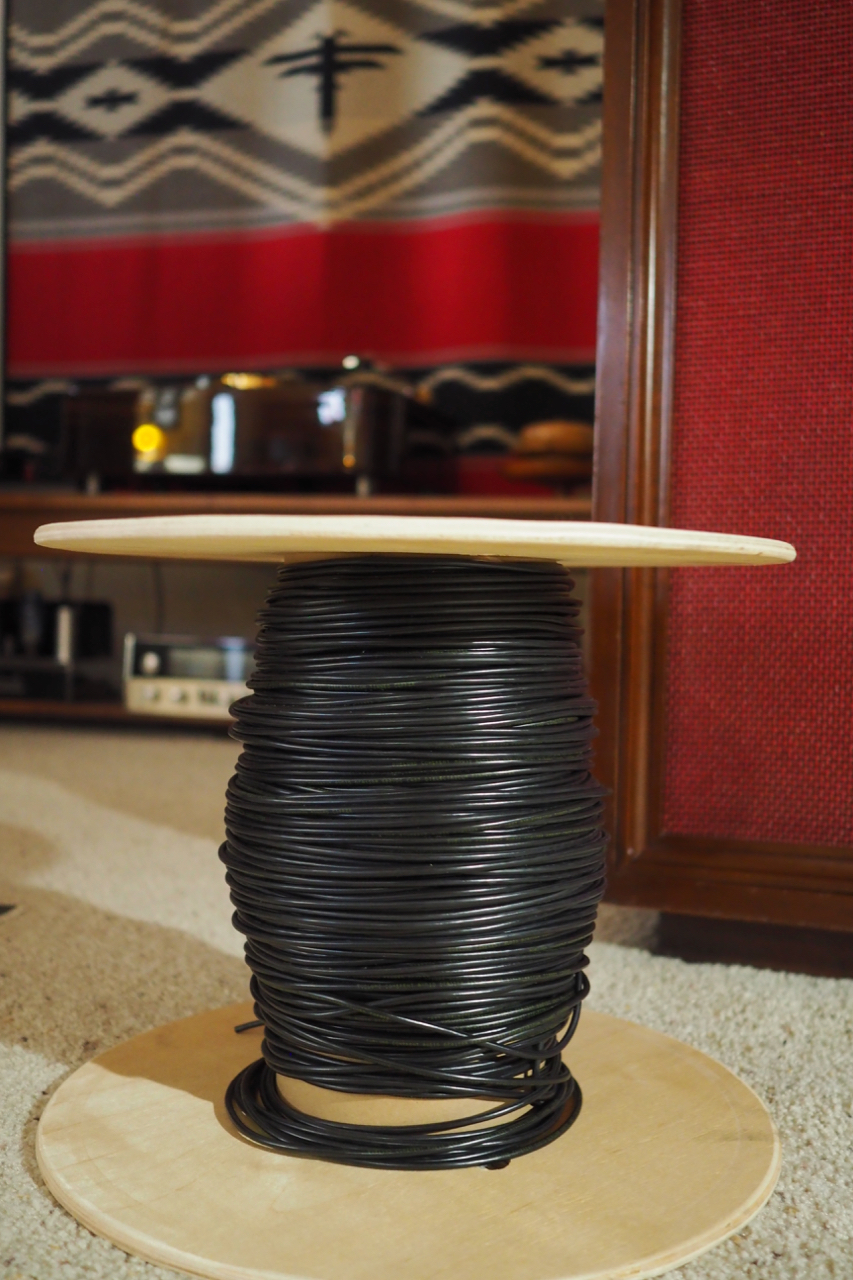
The new 600VDC Duelund DCA12GA tinned-copper tone wire!
These 600V versions of the Duelund DCA20GA, DCA16GA, and DCA12GA tinned-copper wires for all those high-voltage applications are a direct result of you petitioning Frederik to build them, and now they are here.

The new 600V version of the DCA16GA Sn-Cu wire!
This trend in tinned-copper conductors is echoing the trend that started even earlier in the electric guitar world, where you see high-end builders of electric guitars using tinned-copper wire and paper-in-oil capacitors in electric guitar electronics as the premium choice for superior tonal performance.
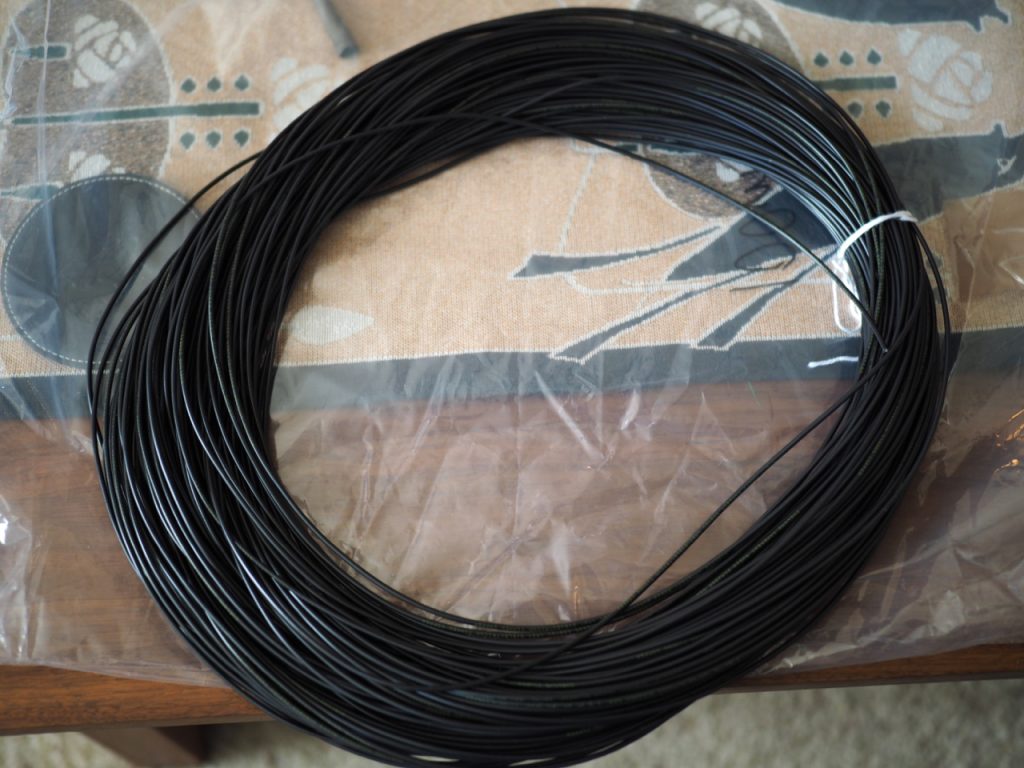
600V Duelund DCA20GA tinned-copper tone cable.
Not only did Frederik Carøe's imagination bring us an entire product line of new Duelund DCA tinned-copper wires to serve every need, but also the breakthrough line of Duelund CAST tinned-copper components like I've used in my vintage McIntosh MX110Z, and in the crossovers of my vintage "Stokowski" Altec's.
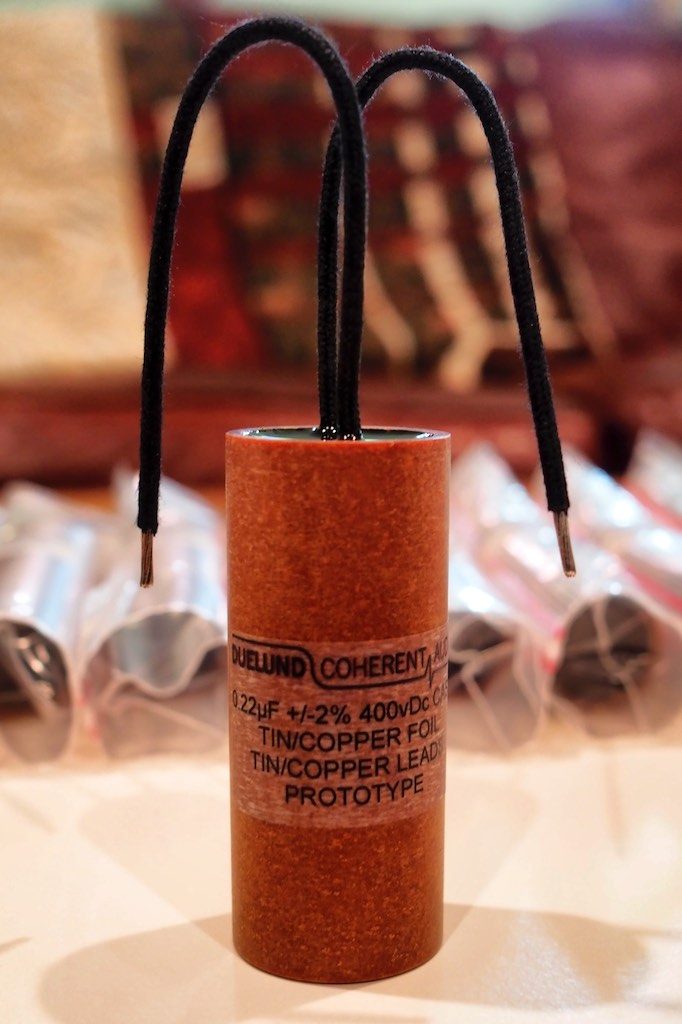
Prototype 0.22uF Duelund CAST tinned-copper capacitor used in my MX110Z cathode follower.
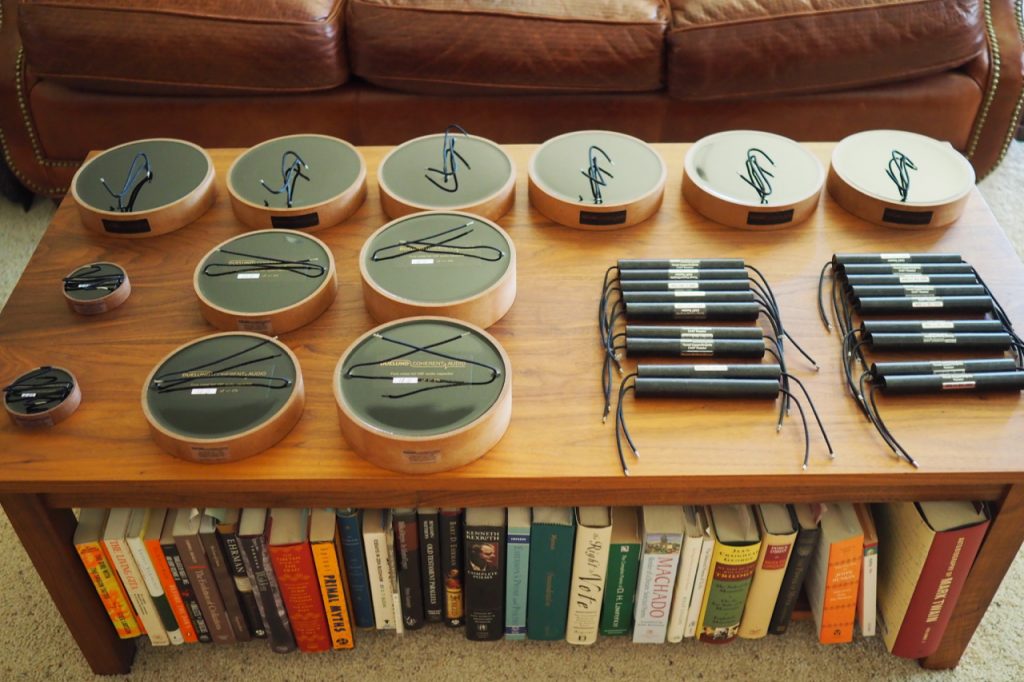
Duelund CAST Sn-Cu components used in the Duelund-Altec Project.
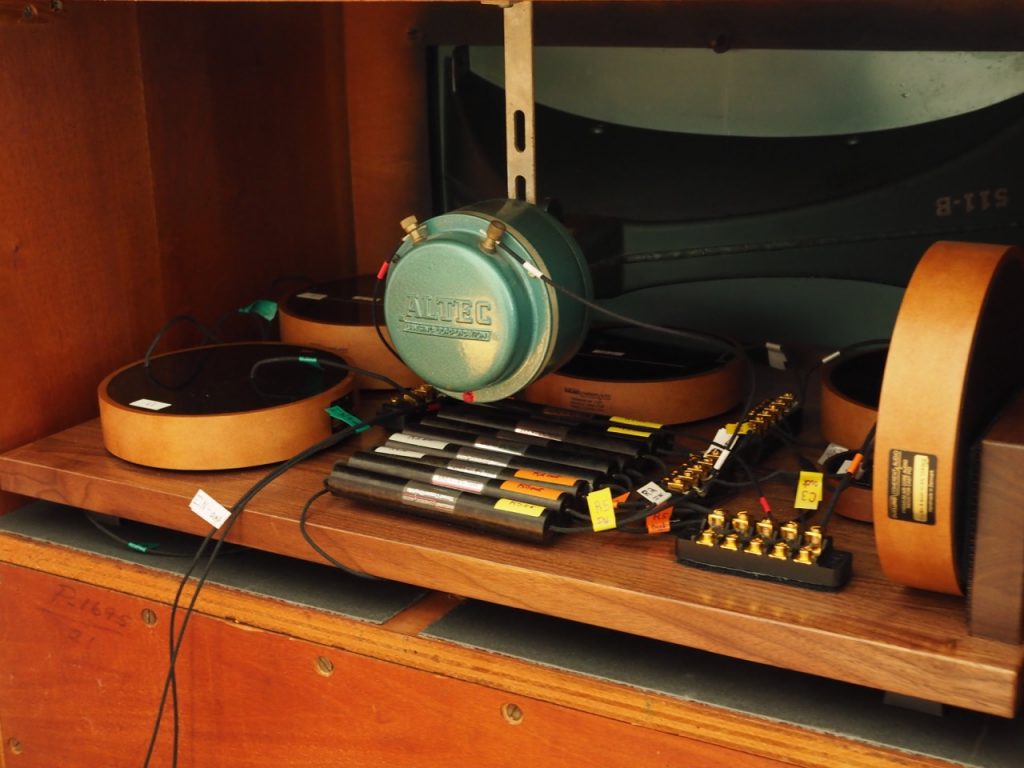
Duelund CAST tinned-copper crossovers in a "Stokowski" Altec's loudspeaker.
Now to top off 2019, Frederik Carøe brought us the new Duelund plastic-free RCA connectors and the new Duelund "Dual" DCA16GA wire, making a new wave of Duelund high-performance tinned-copper interconnects possible.
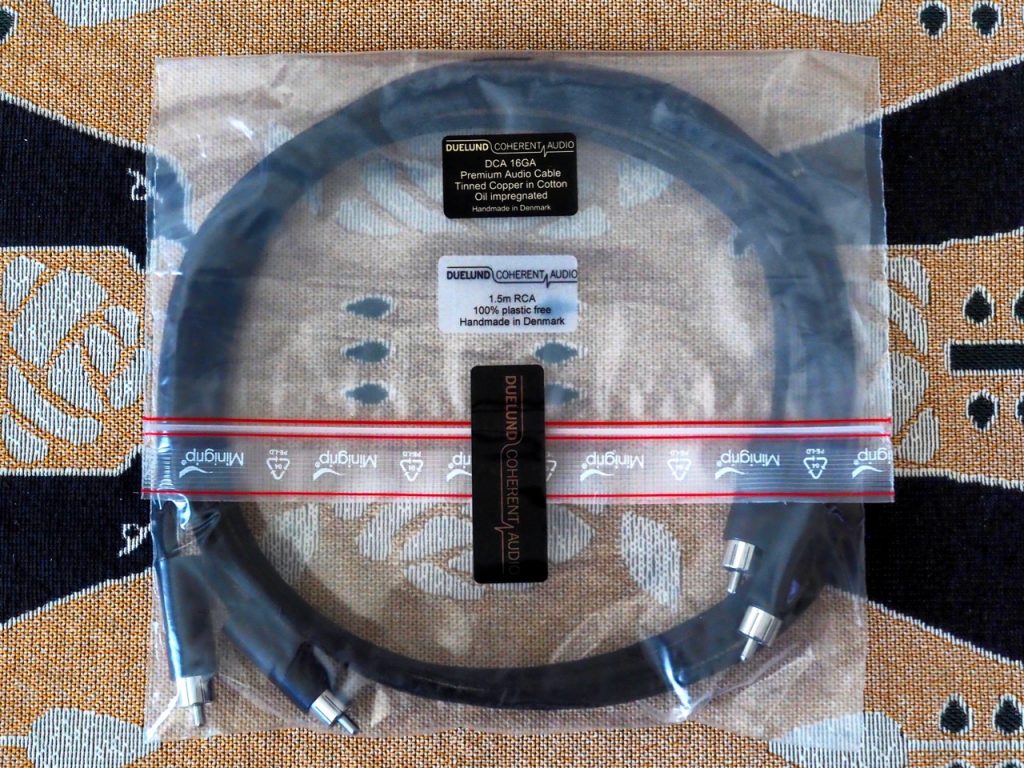
Duelund plastic free RCA DCA16GA interconnects.
It is hard for me to believe that it has already been seven years of Duelund Coherent Audio being an ongoing "hot topic" here at Jeff's Place - time goes by so fast!
There are three more ongoing "hot topics" in 2019 that I would like to mention, that of do-it-yourself (DIY) audio, vintage audio, and the resurgence of musicality as a key topic in the musicality vs. sonics debate in audio.
Any perusal of audio magazines' "best of" lists of audio kit leaves me gasping at the astonishingly high prices of high-performance audio equipment these days. Good audio has always been a bit pricey for as long as I can remember, but never anything like we see these days.
Most of us are average blokes who are into the hifi hobby, and we just want to have fun with audio, enjoy listening to music, and not have to spend as much as a Harvard education (about $70K a year in 2019) to do it.
Most of us still have to think about balancing our budgets within the demands of stagnating wages, funding our own retirement, the high cost of health care, education, transportation, taking care of family, other competing life interests, etc., and as a result of these growing financial pressures we are eking out as much value as possible in everything we do, including our audio hobby.
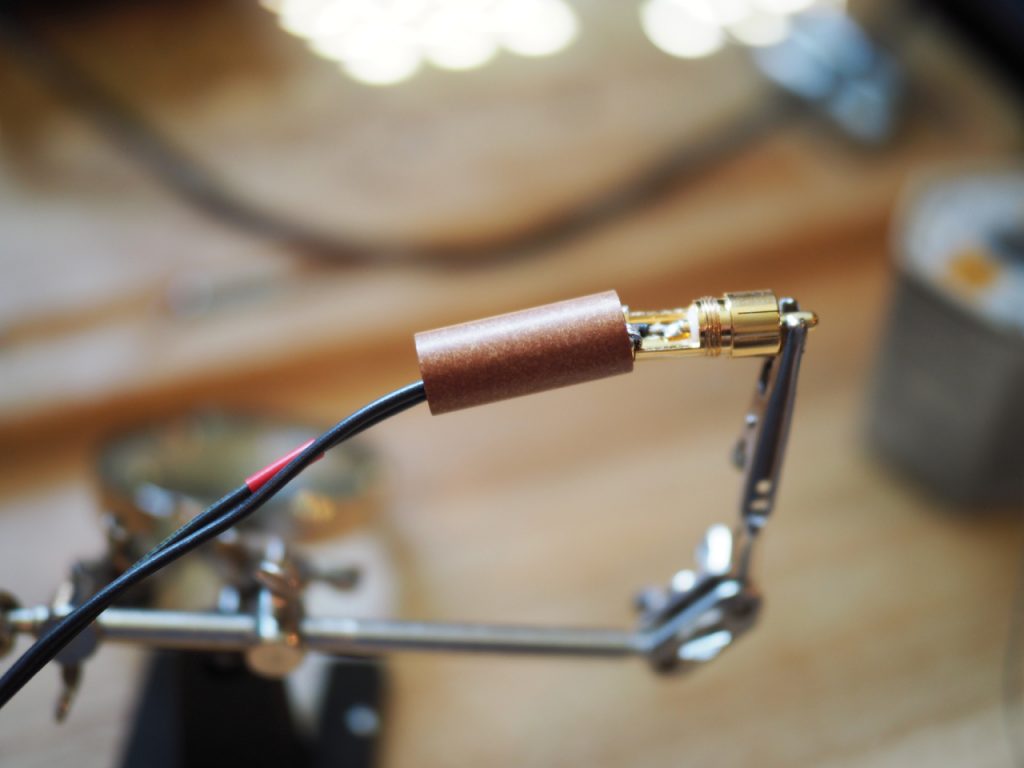
Building some DIY Duelund 600V DCA20GA RCA interconnects.
As a result DIY and vintage audio have enjoyed a surge of interest, not only in response to the high-prices you see in high-performance audio these days, but also because it is fun, and you can achieve performance that matches or exceeds the performance of current high-performance audio products relatively affordably.
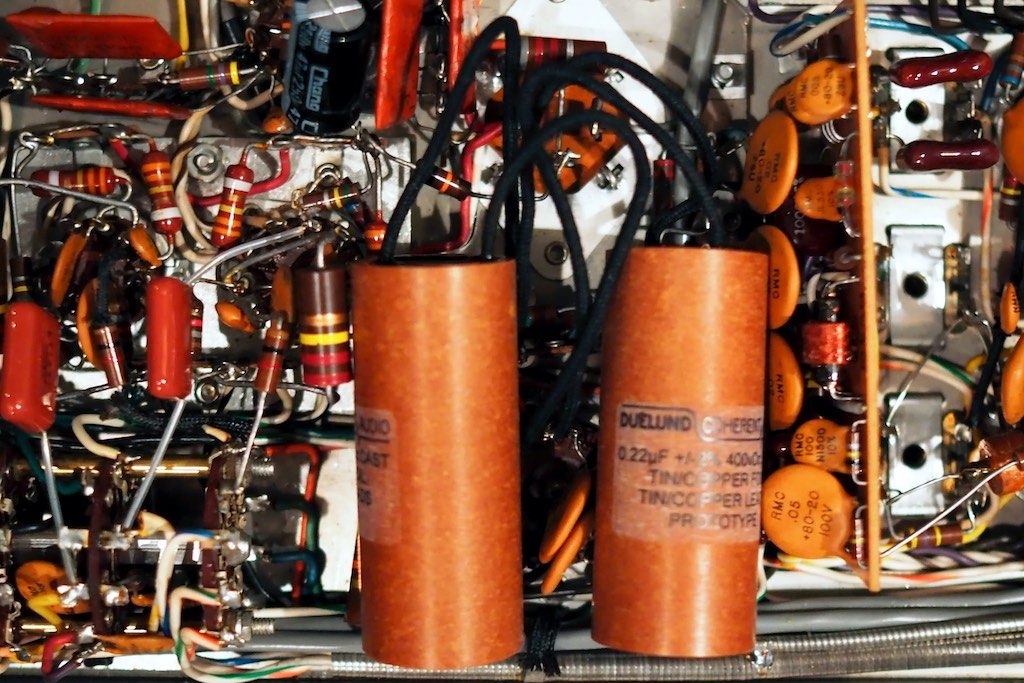
A pair of prototype 0.22uF Duelund CAST Sn-Cu capacitors that I've soldered into my vintage MX110Z McIntosh tuner-preamplifier.
As I've mentioned in my posts about Peter Qvortrup of Audio Note UK, there's a wisdom tradition in the audio and recording arts that some of the very best developments that occurred were early on in audio and recording history, and Peter Qvortrup's perspective - which I happen to share - on when the branches of the music reproduction chain in audio were at their peak points of development, were during 1950-1960 for the recording quality peak, the software quality peak occurred 1950 - 1960, the amplification quality peak occurred 1920 - 1930, and the loudspeaker quality peak occurred in late 1930s. and was lead by cinema sound research & development.
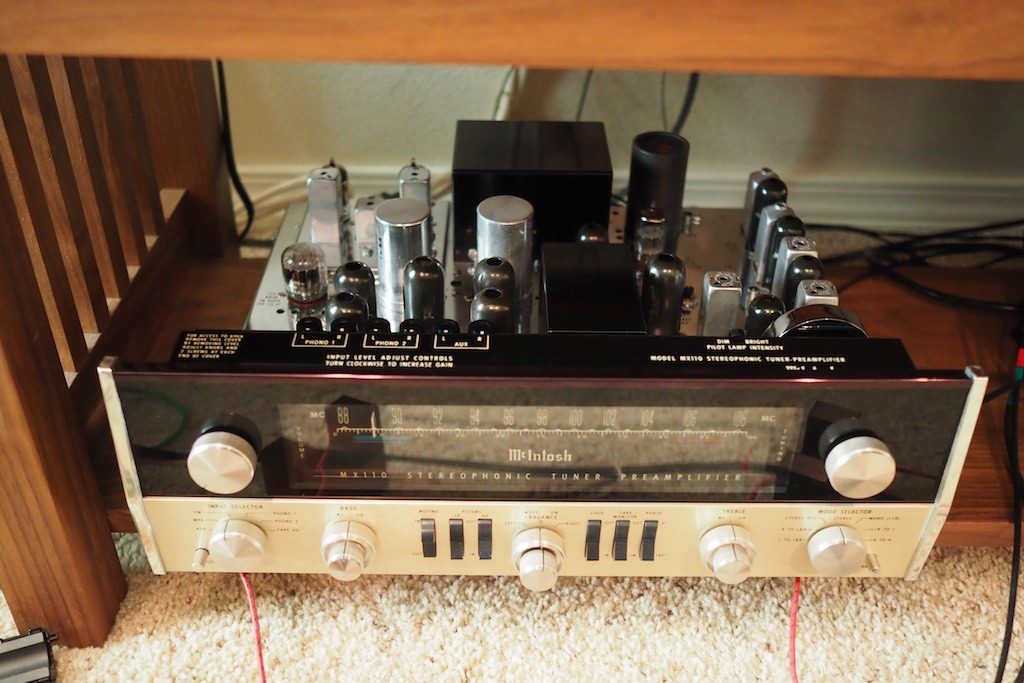
Vintage McIntosh MX110Z tuner preamplifier.

Vintage McIntosh MC30 monaural amplifiers.
While there is some very good audio equipment being offered today - I know because I write about it on an ongoing basis - there is also some extremely good vintage equipment that rivals (and often exceeds) today's offerings, and it can be bought for relatively affordable prices.

Vintage Altec Corona 832A loudspeakers.
For example, take my vintage Altec 832A Corona loudspeakers - or a restored pair of Altec A7 Voice of the Theater loudspeakers like Gary Fischer offers - can outperform about 99% of the current loudspeakers being offered, and they can do it for under $4K, generally.
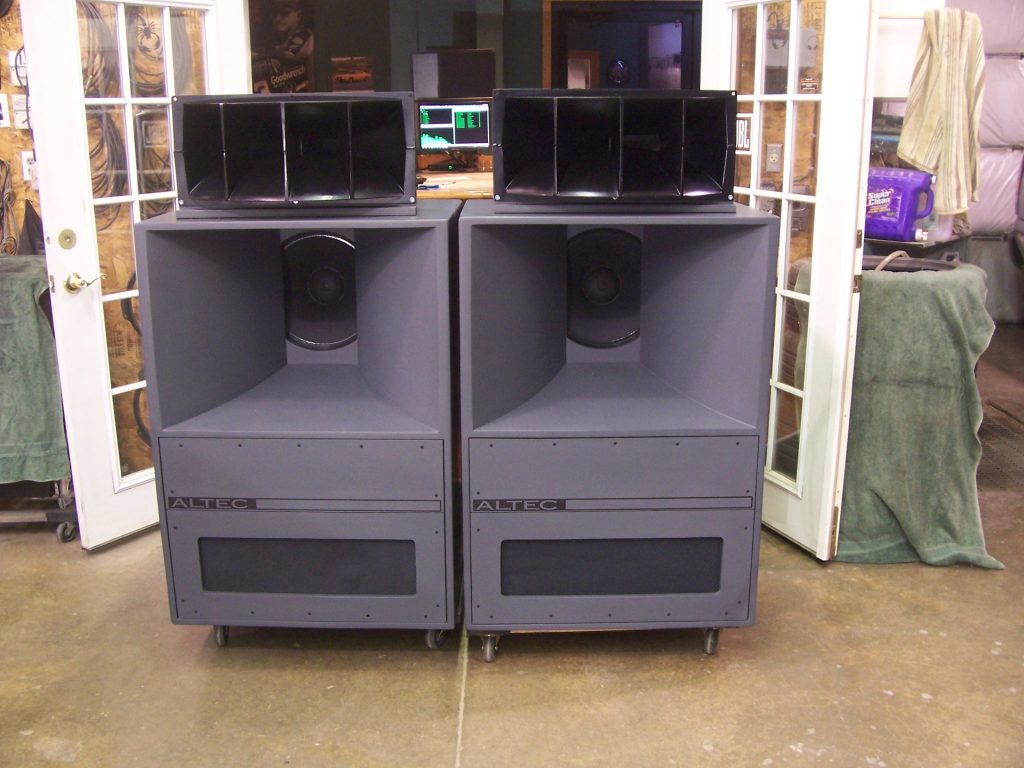
Gary Fischer restored vintage Altec A7 Voice of the Theatre loudspeakers.
I've probably invested around $4K in my vintage Altec 832A Corona loudspeakers, and when used as intended in room corners, the vintage Altec 832A Corona loudspeakers are some of the most satisfying loudspeakers I've ever encountered, and that's with the stock vintage Altec crossovers that are not exactly known for being state-of-art.
Also, take Gary's restored Altec A7 Voice of the Theatre loudspeakers, that when equipped with a set of crossovers based on the Jean Hiraga crossover circuit can sound astonishingly good, and again, better than about 99% of any contemporary loudspeakers at any price that are offered today.
You can build a nice set of Hiraga-style crossovers for your A7's for under $1000, an easy and rewarding DIY project if there ever was one, and a combination that still awes me every time I hear them play music.
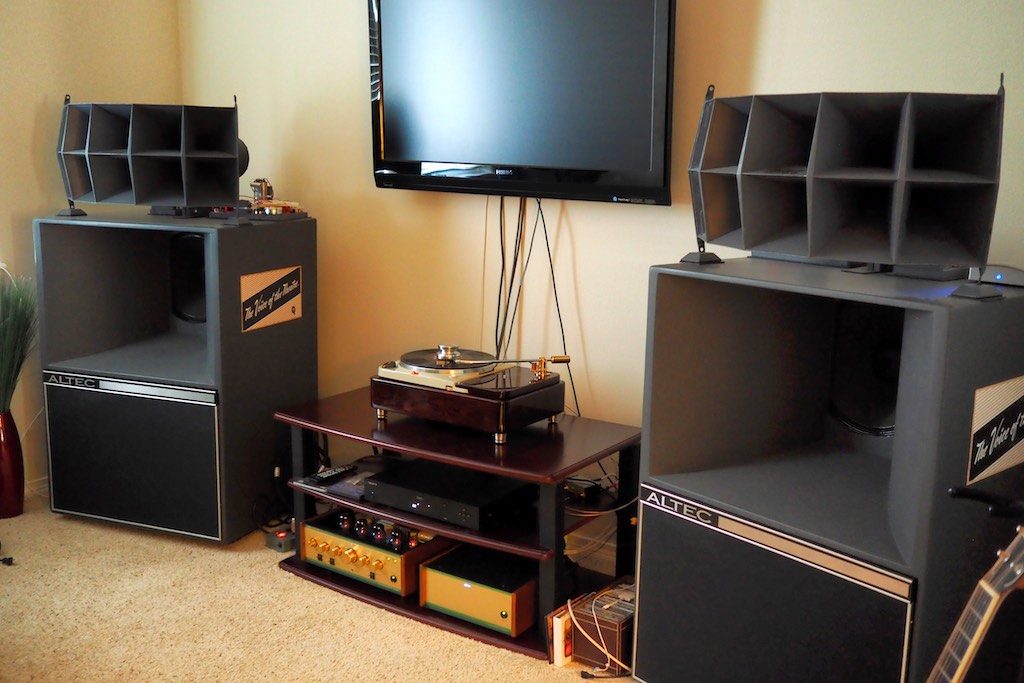
Vintage Altec A5 Voice of the Theatre loudspeakers, Leben CS600 integrated amplifier, and Leben RS-30EQ phono preamplifier.
Gary also restored my vintage Altec A5 Voice of the Theatre loudspeakers that you can read all about (HERE), which is another vintage loudspeaker dream come true for me.
Just sayin', vintage electronics and loudspeakers can be an awesome adventure, with more than satisfying musicality & sonic performance for those late night and weekend listening sessions!
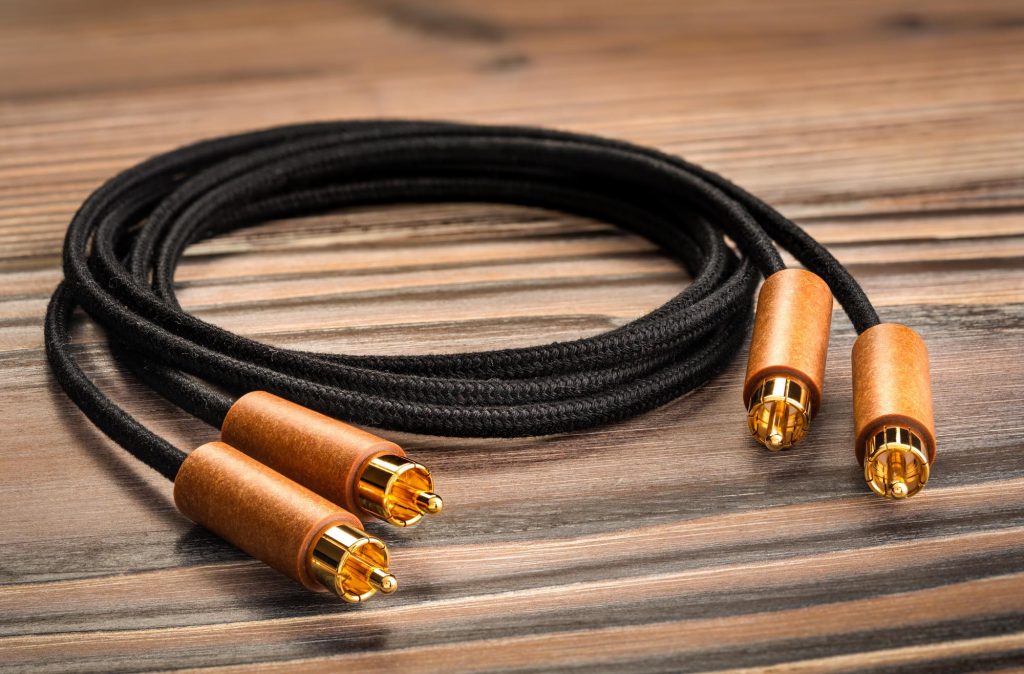
Duelund Dual DCA16GA interconnect photo courtesy of Duelund Coherent Audio.
Another great example of high-performance DIY is the Duelund DCA tinned-copper cables. If you use the Duelund Gold RCA's (they're $55.95 USD a pair at Parts ConneXion), you can build a pair of one meter Duelund Dual DCA16GA interconnects (pictured above) for $153.80, using the Dual DCA16GA wire and Duelund Gold RCA's. That's a really good value for this level of performance.
If you want to bump performance up even further you could build your Duelund Dual DCA16GA interconnects using the new Duelund plastic-free RCA's that I wrote about HERE, which have become my favorites.
At HiFi Collective the new Duelund plastic-free RCA's are priced at £50.00 each. They are spendy, but they sound great. So that means you could build a pair of one-meter interconnects like I wrote about at the link for about $264.15 USD for four Duelund plastic-free RCA's, and $41.90 USD for the Duelund Dual DCA16GA wire, for a grand total of $306.o5 USD. Not a bad price for such a terrific interconnect, and one that favorably competes with commercial offerings up to $10K USD.
Nelson Pass (Pass Labs, First Watt, Pass DIY) is a huge advocate of DIY amplification as well, and the Burning Amp Festival is one of Nelson's favorite events of the year. Nelson gets involved heavily in it each year, often debuting new and novel circuits for free to enthusiasts. Some of Nelson's circuits are available as affordable kits at DIY Audio Store, not to mention other high-value kits that can compete with some of the best equipment being offered commercially today.
Those are just a couple examples of many, but you get the idea, DIY and vintage go together like peanut butter & jelly, and both have been ongoing "hot topics" at Jeff's Place in 2019.
Key Insights in 2019
Peak Audio Performance Periods
I mentioned it above, but conversations Peter Qvortrup of Audio Note UK in 2019 really helped me realize that my extremely positive experiences with vintage audio electronics and loudspeakers were due to the fact that most of the cutting edge developments that occurred in audio and recording history were early on in their evolution, with a recording quality peak occurring 1950 - 1960, a software quality peak occurring 1950 - 1960, an amplification quality peak occurring 1920 - 1930, and a loudspeaker quality peak occurring in late 1930s that was lead by cinema sound research & development.
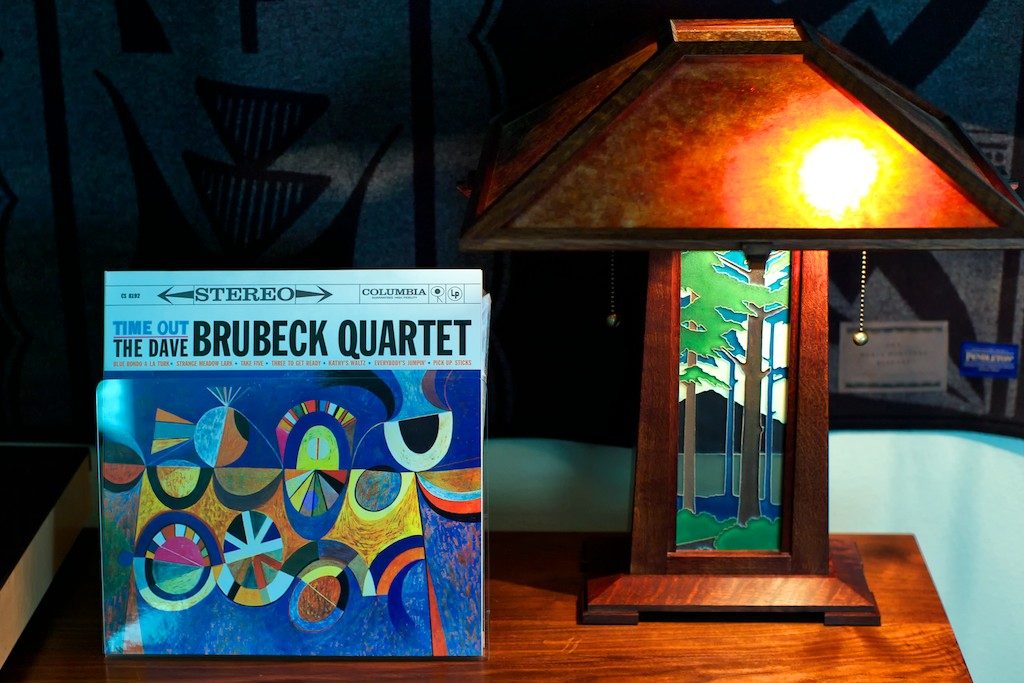
Time Out
For example, let me start with some of my favorite music - jazz - where quite a lot of my cherished jazz albums were recorded in the period of 1950 to 1960 when the recording arts were peaking in quality. Albums like Charlie Parker With Strings, Horace Silver Trio, The Quintet: Jazz at Massey Hall, Thelonious Monk Quartet with John Coltrane at Carnegie Hall, Time Out, Kind of Blue, and Mingus Ah Um, for example, were released.
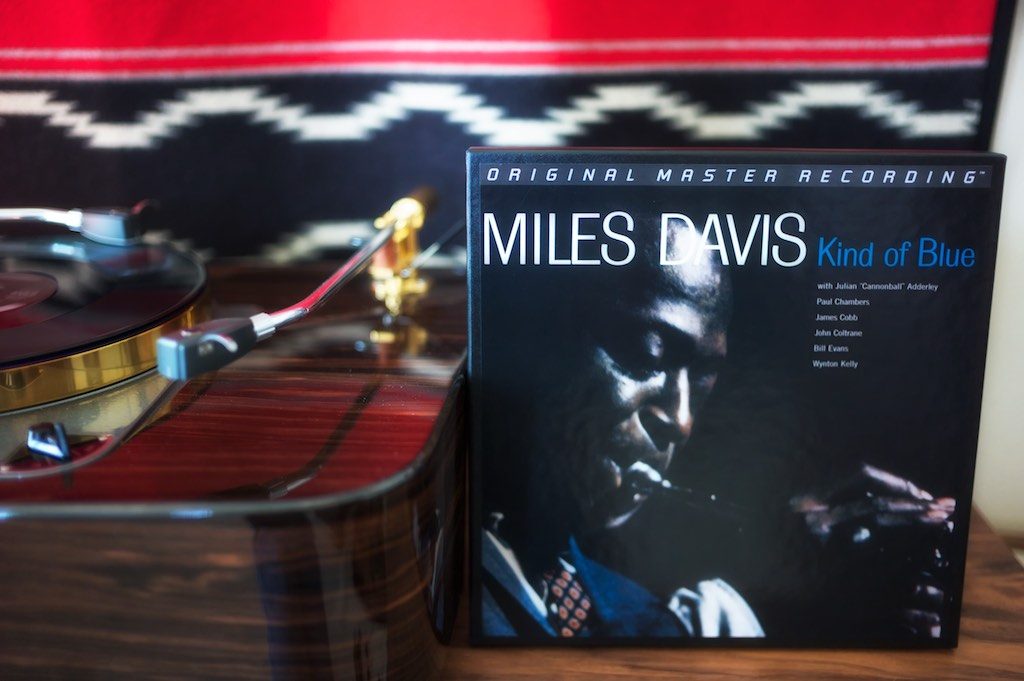
Kind of Blue
Generally speaking, great recordings featuring great artists proliferated in the 1950s and 1960s, and they were released on the premium software of vinyl, which many of us music lovers and hifi buffs hold dear today, whether it was classical, jazz, rock, pop, country, or folk music.
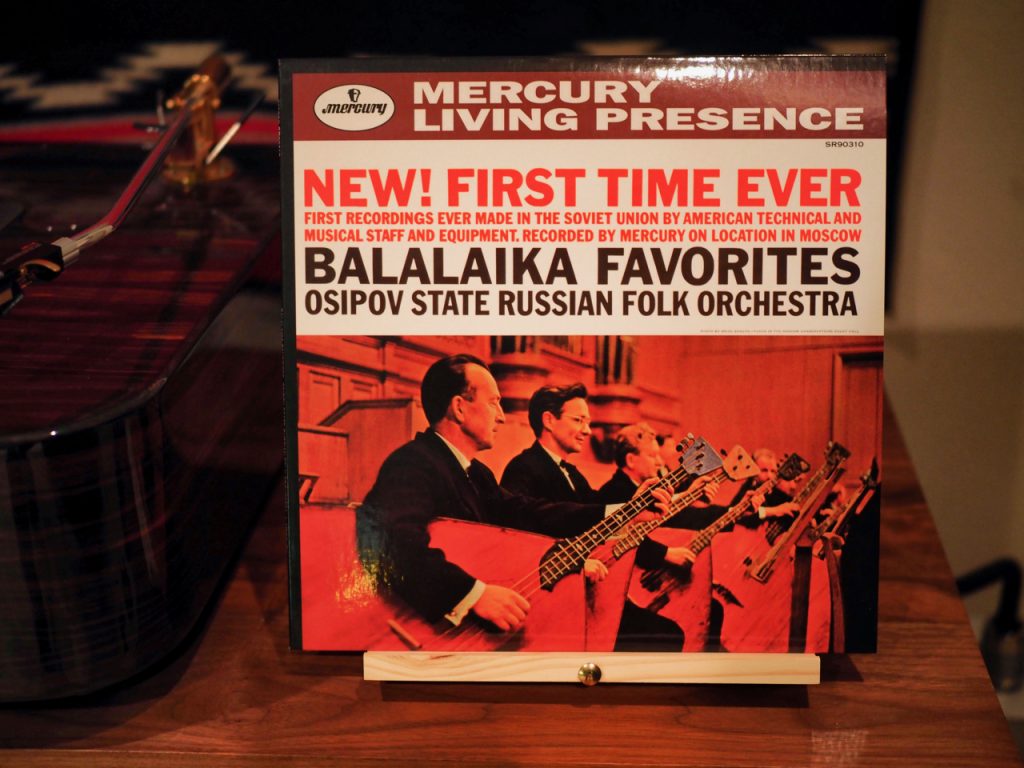
Balalaika Favorites on Mercury Living Presence
This period of the 1950s and 1960s set the standard for quality music that we hold as benchmarks today, and personally, I like to play that great music back on turntables that originated during that same general time period, like the Garrard 301 or Thorens TD124, which are two cherished favorites of mine.

Thoren TD-124 turntable
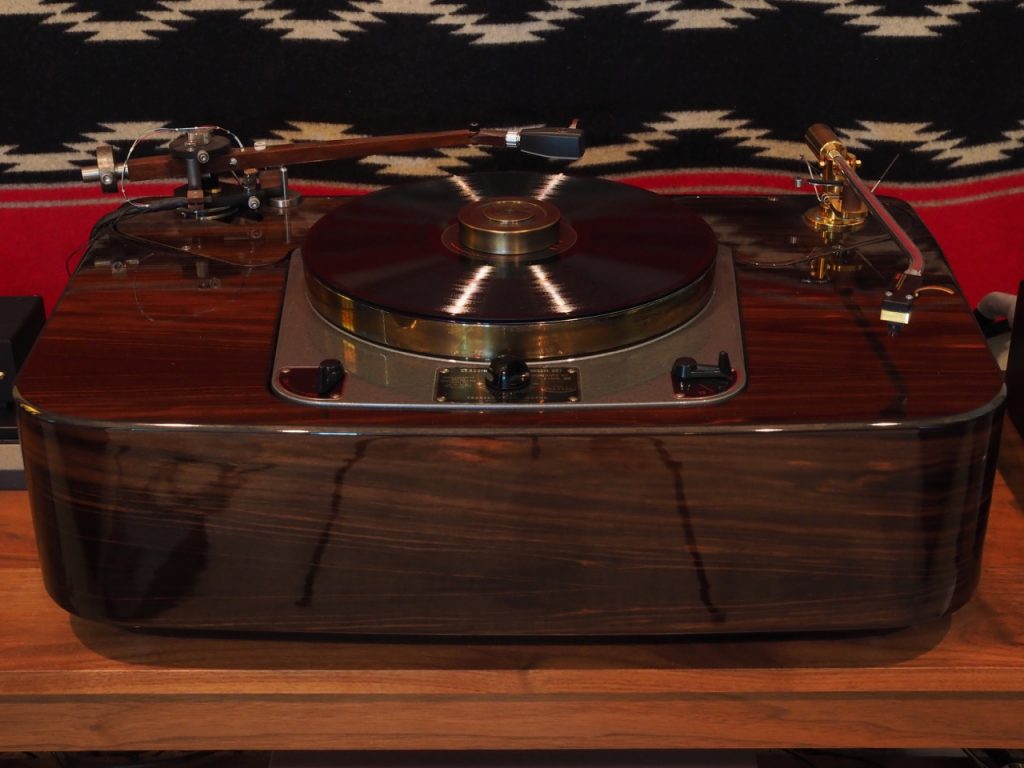
CTC hot-rodded Garrard 301
With an amplification quality peak occurring from 1920 - 1930 you know what that means - single ended triode (SET) amplifiers. Like a dumbo, during the time I made a move to loudspeakers of lesser sensitivity I sold off all my SET amplifiers. I have owned 45, 2A3, 300B, and 845 SETs over the years, and now I wish I still had them to use with my vintage Altec's. I could just kick myself for parting with them. Maybe one day again ...
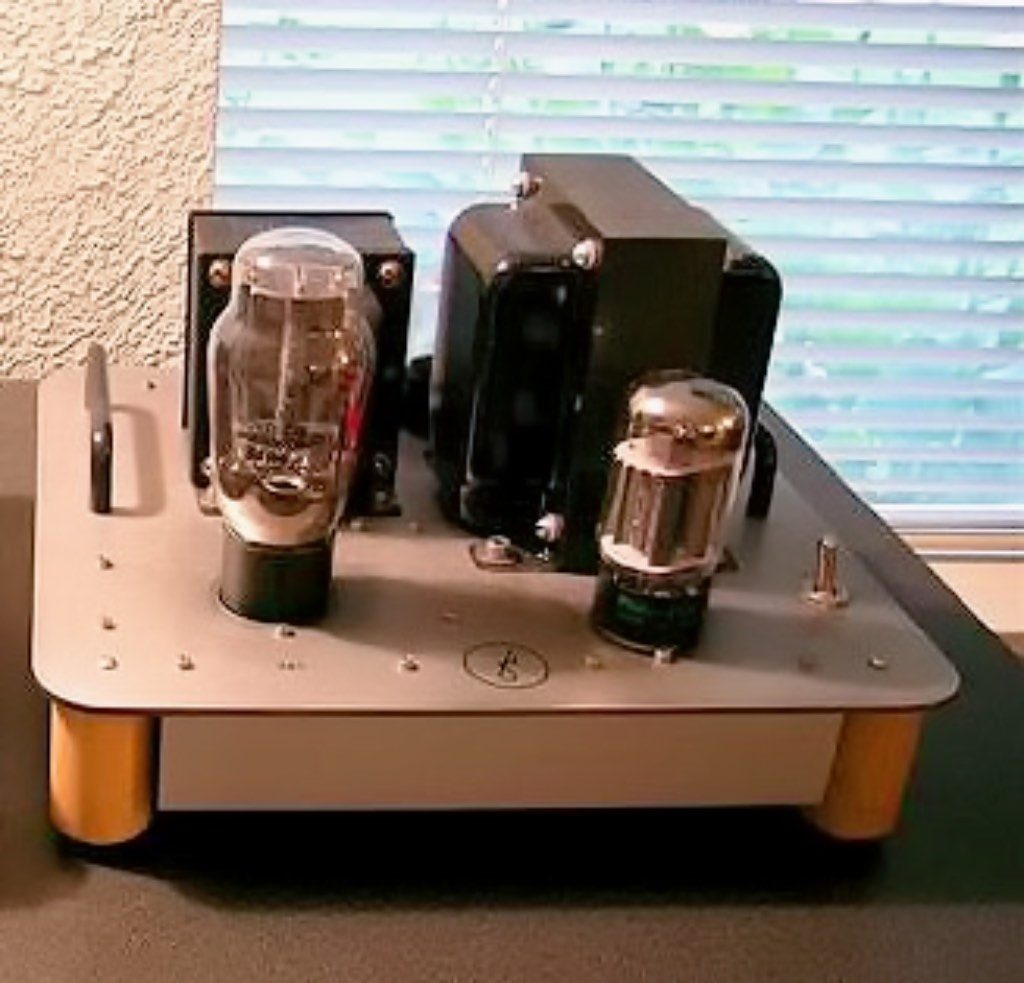
One of my fi 2A3 monaural amplifiers I bought from Don Garber. How I wish I still had those Fi 2A3 mono amps!
Although, I have to say that there there are some vintage amplifiers - I am thinking of my vintage McIntosh MC30 monaural amplifiers - that have more power, and from a tonal and dynamic standpoint match really well with my vintage Altec loudspeakers, and are just hard to beat musically & sonically.
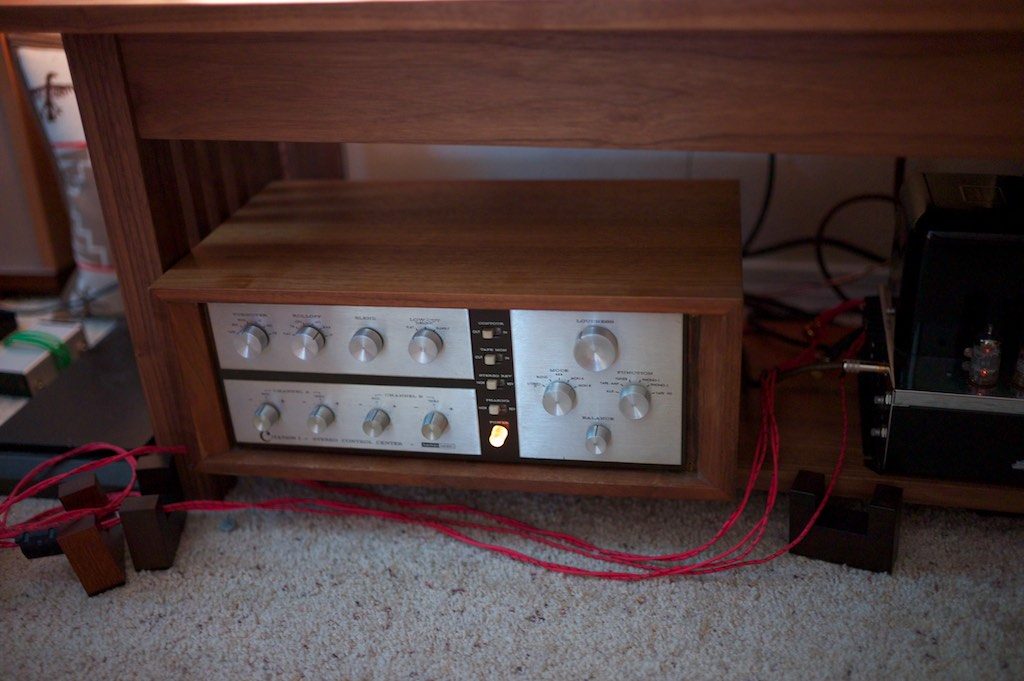
Vintage Harmon Kardon Citation 1 vacuum tube preamplifier.
I think most music lovers and audiophiles are aware of how superb certain vintage preamplifiers are too, like the Marantz Model 7, the McIntosh MX110Z (and other early Mac preamps like the C11 and C22), and the Harmon Kardon Citation I, which are definitely some of my favorite vintage preamplifiers.
In fact, I know more than a few people who would rather have one of the above mentioned preamplifiers over any current preamplifier in production. Not only are they great from a musicality & sonics performance standpoint, they are classics to be cherished and passed on as heirloom possessions to family or friends.
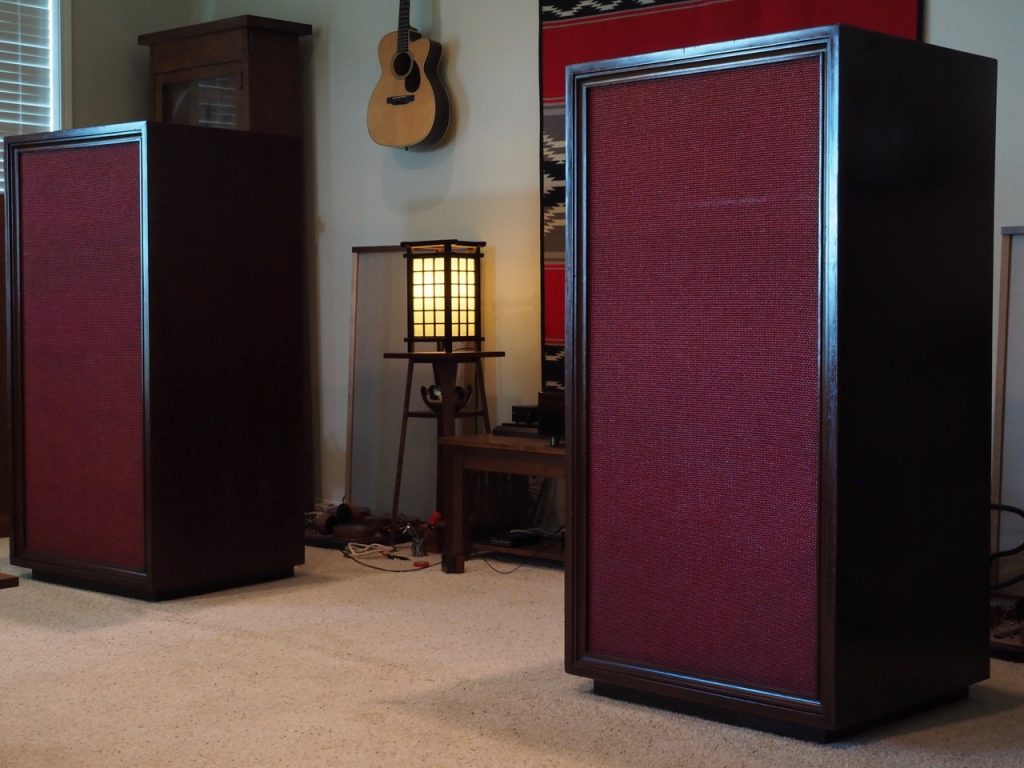
The "Stokowski" Altec's with Duelund CAST tinned-copper crossovers.
Last, but far from least, it bears repeating that the loudspeaker quality peak occurring in late 1930s and was was lead by cinema sound research & development from companies like Western Electric and Altec.
That brings me to my beloved vintage Altec loudspeakers, direct descendants of those early years, that when properly prepped (i.e. that generally means new crossovers), can go toe-to-toe with any loudspeakers on Planet Earth and still better most of the current crop of loudspeakers at any price.
The "Stokowski" Altec's with Duelund CAST tinned-copper crossovers pictured above are so fantastically musically engaging that they have replaced my hot-rodded Tannoy Westminster Royal SE's as my loudspeakers of choice for just kicking back and enjoying music.
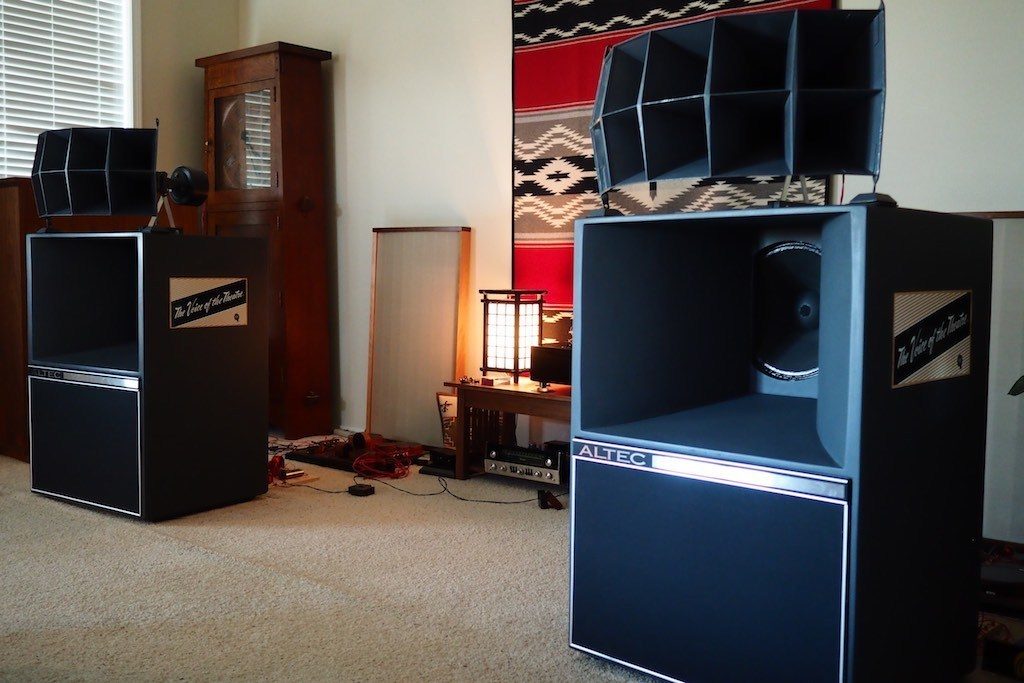
Vintage Altec A5 Voice Of The Theatre loudspeakers.
My vintage Altec A5 Voice Of The Theatre loudspeakers are pretty wonderful too, and these days they form the beating heart of my AV system.

Vintage Altec A5 Voice of the Theatre loudspeakers in my AV system.
There is something incredibly enchanting about what the big vintage Altec A5 Voice of the Theatre loudspeakers can do for music and film. They create a tonally natural, completely mesmerizing sense of presence of film music, with an exciting realism of Foley sound effects (named after Jack Foley) like footsteps, creaking doors, and everything else that brings a film to life.
So how much performance progress have we made in audio since those peak periods of advancement back in the Golden Age of audio?
Some, but probably not as much as you have been led to think by audio magazines, as the best of Golden Age audio still ranks high among the best of any audio equipment produced today.
That's not to say there isn't some superb audio equipment being produced today, as there most certainly is, but at least in my opinion, most of the best of today's audio equipment can trace its lineage directly back to those Golden Age designs.
Okay, not that I've talked about the peak audio performance periods in the Golden Age of audio, let's move on and discuss the ongoing debate about musicality vs. audiophile style sonics.
Musicality vs. Audiophile-Style Sonics
What made the audio equipment of the Golden Age of Audio stand out was the incredible live-like musicality of the equipment. The people who designed that audio equipment had the reference of live music to guide them, and it is immediately obvious when you listen to music with it.
Those Golden Age designers made sure they got as close as possible to the fidelity of live music with their designs - the musicality aspect of performance. That is to say that they placed a high value on high-fidelity to the music, and they made sure they got the performance of their designs as close to the actual sound of the basic elements of music as possible, which includes an realistic portrayal of timbre, tone color, as well motional elements of the music like melody, rhythm, tempo, beat, and elements like dynamics and loudness that helped recreate the feeling that live music was playing in front of you, and providing the elements necessary to evoke the emotional engagement of hearing live music.
Then as time went on, audio designers began to place more emphasis on the audiophile hobbyist's desire for more emphasis of reproducing recording artifacts like transparency, resolution, soundstage, soundspace, and imaging.
Boosting of the elements of audiophile-style sonic elements can contribute to the emotional impact of music if not overdone, but as you would expect from human nature, if some is good, more is better - right?
For some years high-performance audio went down a path of exaggerated audiophile sonics, which turned out to be at the expense of musicality and emotional involvement. Audio equipment began to take on a synthetic and/or analytical quality as the reproduction of recording artifacts became more of an emphasis, and quite a few music lovers began to become dissatisfied with their audio systems, and ended up on a merry-go-round of buying and selling audio equipment to hopefully get the musicality back in their system, to no avail. The market had been almost completely taken over by audio equipment that superbly produced exaggerated recording artifacts, but couldn't play music worth a damn.
Like many things in life, we learn from our mistakes, and the audio industry has started moving back towards a balance of musicality & sonics that is restoring musicality and the intended emotional response of the music listening experience.
We know now that researchers who study the neurobiology of music have found that certain elements of musicality and sonics reproduction create the best possible music listening experience for music lovers. Those researchers have found that a home music system that can play at realistic loudness levels, is dynamically realistic, and can realistically portray timbral textures, tempo, and beat, will be more emotionally engaging and musically satisfying than a home music system that can’t do those things as well, and that a touch of audiophile-style visuospatial attributes - like imaging, soundstaging, and the sense of recorded space - co-opt's the intraparietal sulcus of the brain in such a way that increases the level of emotion experienced when listening to recorded music.
It's really as simple as that, and the audio community has rediscovered the design principles of the Golden Age of Audio, but with a few added benefits of today's - and sometimes improved - technology.
Analog vs. Digital and Solid State vs. Vacuum Tubes
The analog vs. digital and solid state vs. vacuum tubes debate has raged on over the years, but it seems to me that lately we are reaching a certain sort of parity between those technologies source and amplification technologies.
By a "sort of parity" I don't mean that analog & digital sources, or solid state & vacuum tubes electronics, now sound the same, they don't, but rather that the implementation of digital sources and solid state amplification have evolved and matured to a point where they are simply superb by any measure.
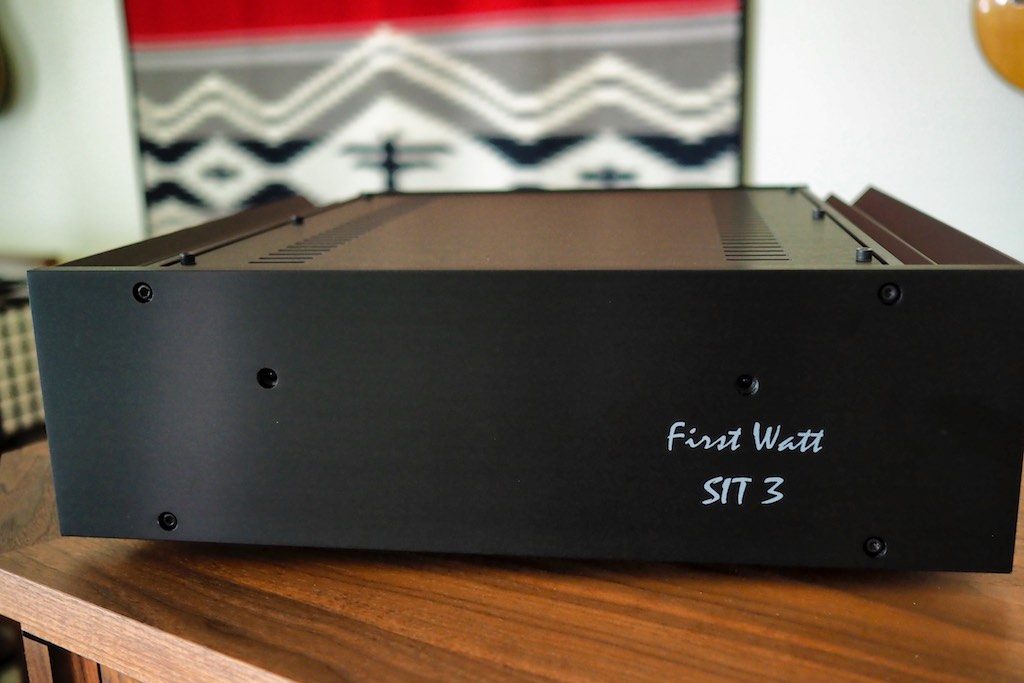
The First Watt SIT-3 stereo power amplifier.
One listen to the SPEC RSA-M3 EX Real Sound Amplifier from Japan, or the First Watt SIT-3 or the Pass Labs XA25 stereo amplifiers from the USA, for example, will dispel any notions of an inherent vacuum tube amplification superiority, although it must be said that the best in vacuum tube amplification design is still as superb as it has been from the dawn of the Golden Age of Audio.
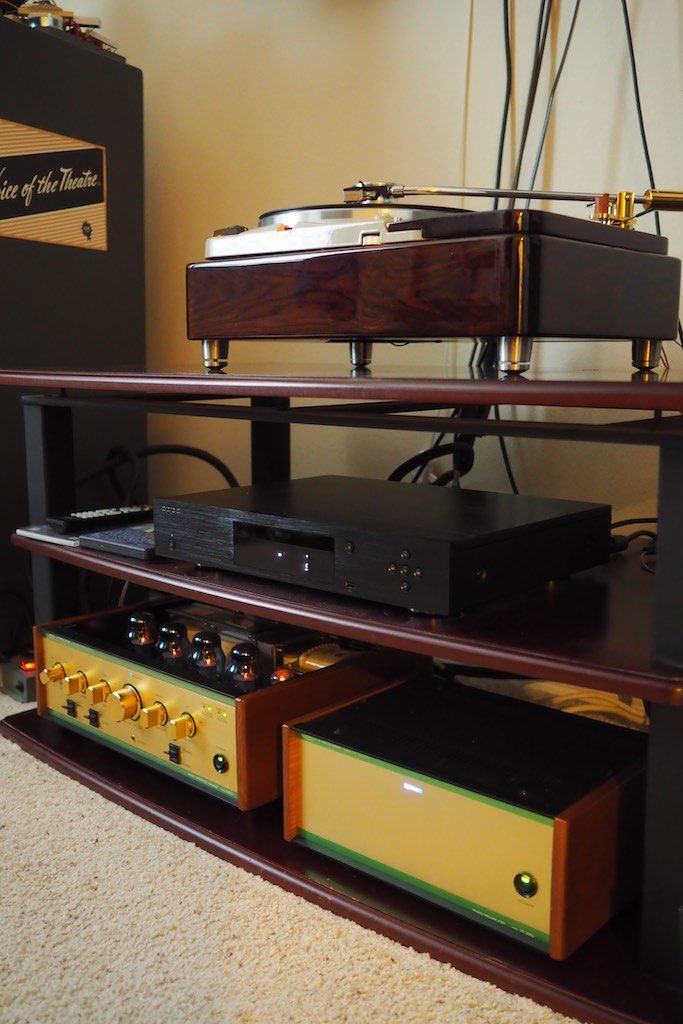
Another key insight for me in 2019 is how good digital sources can sound when combined with the best of Golden Age loudspeakers - like my Altec's - and some of the superb audio amplification of today.
Watching a movie or TV show streamed via my Apple TV or my MacBook Pro sounds remarkably good over the vintage Altec A5 Voice of the Theatre loudspeakers, as does spinning DVD or Blu-Ray movies, or an occasional CD, on my OPPO UDP-203 Blu-ray player.
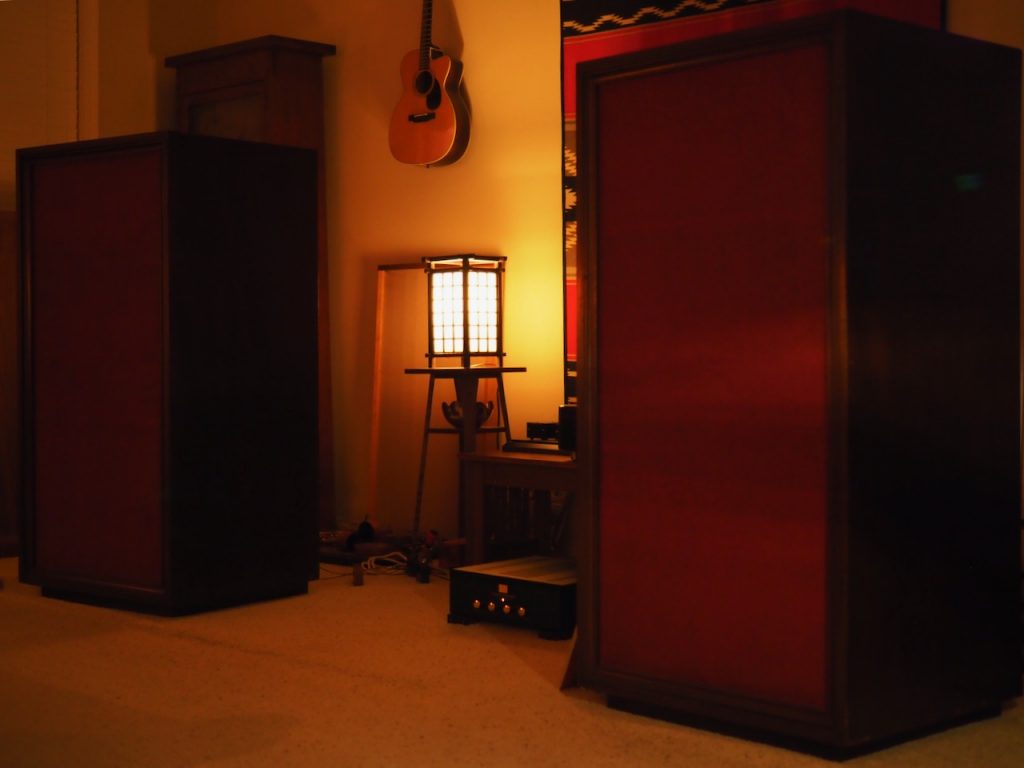
The Duelund-Altec Project "Stokowski" Altec's with the Duelund CAST tinned-copper crossovers.
In my main music listening system with my Duelund-Altec Project "Stokowski" Altec's with their Duelund CAST tinned-copper crossovers, streaming digital over my Mhdt Labs Havana vacuum tube USB DAC sounds remarkably musical and engaging, and not just for digital, but even when compared to analog sources such as vinyl.
I'm not quite sure why there is such synergy between vintage Altec loudspeakers and digital sources - even with modest digital sources like mine, but there is, and it is easy to hear. If your are a digital sort of person take note that you may want to include some vintage Altec's in your future, and it will likely raise your listening pleasure to record levels (no pun intended!).
The KISS Principle in Audio
My now deceased friend, Sebastian, a crazy-brilliant organic chemist from Berkeley, used to tell me how important the KISS principle was to him. His "Keep It Simple Sebastian" principle applies to audio just as it does with many things in life.

The new Leben CS600X integrated amplifier.
Take integrated amplifiers for example. I've always been a big fan of quality integrated amplifiers for this very reason, as they simplify setup to get good performance, they are more affordable than separates, and they punch way above their weight from a performance vs. cost perspective, which adds up to big value.
My Leben CS-600 vacuum tube integrated amplifier has been with me for over a decade, it sounds great, has been totally reliable, and sounds fantastic whether it was with my former Harbeth Super HL5 loudspeakers, or with my current vintage Altec A5 Voice of the Theatre loudspeakers.
Honestly, more often than not, certainly music lovers - and quite a lot of audiophiles - would be better served by investing in a quality integrated amplifier, a good pair of loudspeakers, a good source, and with the savings used to buy more music.
That's a proven recipe for a happy music lover or audiophile, and will get you off the audiophile merry-go-round, so you can focus on exploring the world of music.
A lot of people think that audio happiness comes from getting a more expensive and complicated hifi system, when in reality it is the exact opposite that is much more likely to be true.
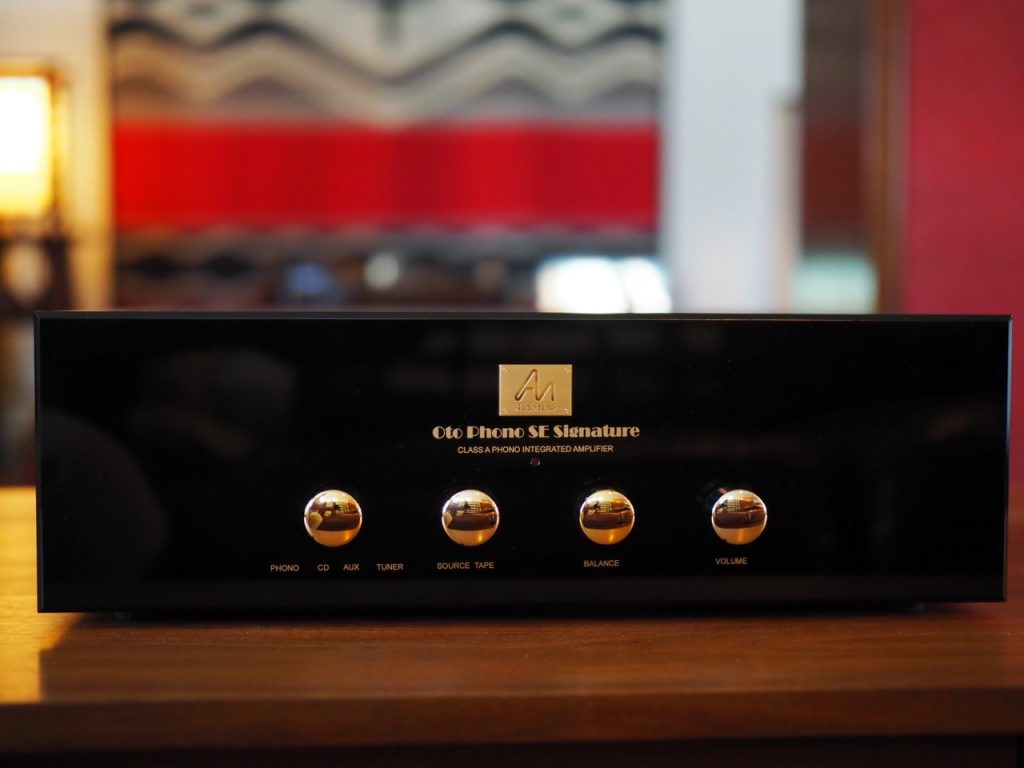
Audio Note UK Oto Phono SE Signature integrated amplifier
Another great example of a superb integrated amplifier is the Audio Note UK Oto Phono SE Signature, which packs an incredible amount of performance and value in a relatively small, affordable, and inexpensive to maintain package.
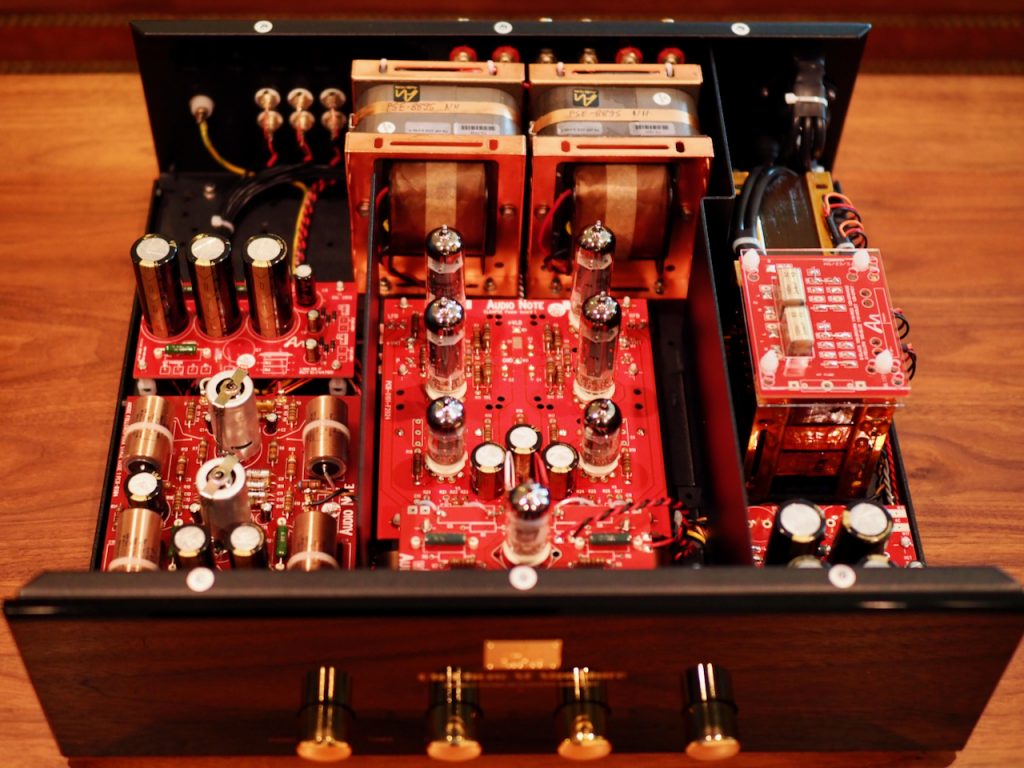
The Oto Phono SE Signature is hand crafted - the one I have was beautifully hand-built by Amy at Audio Note UK - and the quality of materials used to build the Oto Phono SE Signature are extraordinary by any measure.
The Oto Phono SE Signature is an excellent example of an integrated amplifier done right. It includes a superb internal vacuum tube phono section (value!), and uses affordable EL84 vacuum tubes so there's no expensive maintenance costs. I love EL84 amplifiers, and the EL84 vacuum tube is one of the most under-appreciated vacuum tubes in audio-land - it's superb. The Oto Phono SE Signature is also single ended pentode, and I love the way EL84 single ended pentode amplifiers play music – they just sound so live, real, and visceral on my vintage Altec loudspeakers.
If that wasn't enough of a recommendation to consider an integrated amplifier at the heart of your audio system consider this:
Legendary mastering engineer, and man of many talents, Steve Hoffman, weighed in on an earlier post of mine about the Oto and said, "I use an Audio Note (UK) Ltd Oto Phono SE Signature in my studio. It's amazing, especially for the money, a really nice EL-84 unit that does it all." and "The OTO has everything I need in the studio, phono section, tape/EQ loop, everything."

The Duelund-Altec Project "Stokowski" Altec's with the Duelund CAST tinned-copper crossovers with the Oto Phono SE Signature.
I thought it was really cool for Steve to weigh in with his impressions of the Oto, and I completely get what Steve means.
The Oto is amazing with my Duelund-ized "Stokowski" Altec's, and has become a kind of "desert island" kind of system for me because of its extremely engaging musical & sonic performance, and its relative simplicity, which I love. Their combined performance is stunning. If I retired from writing about audio tomorrow, I could be happy forever with the combination of the Duelund-ized "Stokowski" Altec's and the Oto Phono SE Signature.
I've had the same sort of reaction to my vintage Altec A5 Voice of the Theatre loudspeakers and Leben CS-600 integrated amplifier based AV system.
Integrated amplifiers combined with good speakers can provide for a very high-performance and non-fussy music listening experience.
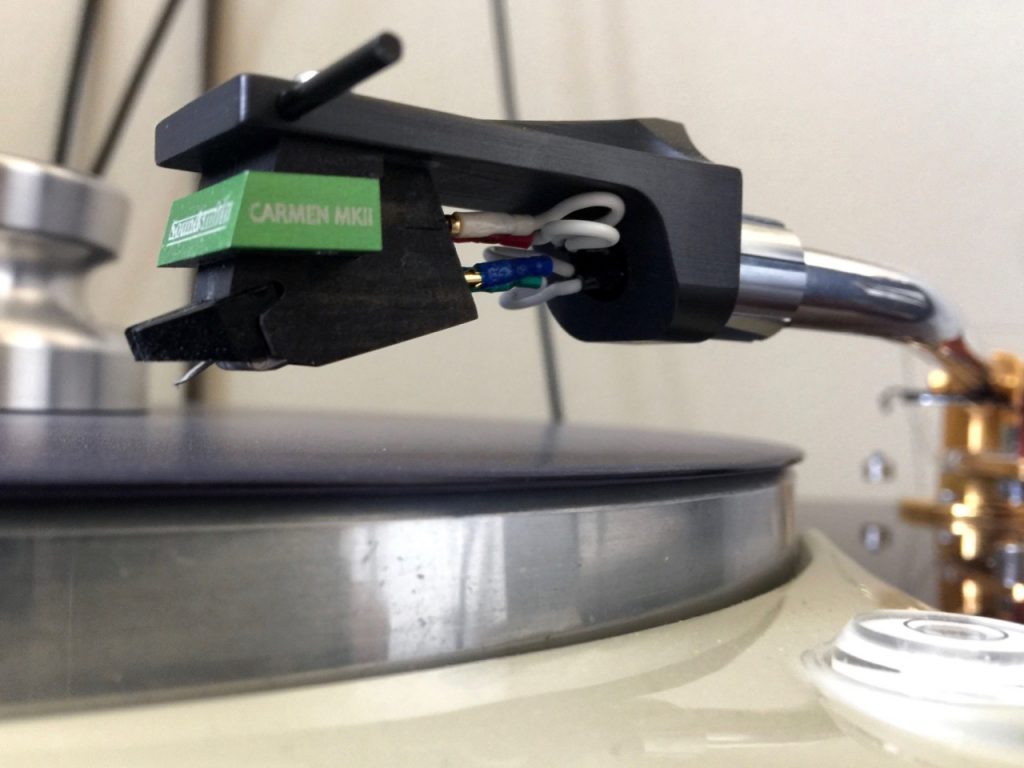
The Soundsmith Carmen Mk II phono cartridge.
Another good example of the KISS principle is going with a high-output phono cartridge like the Soundsmith Carmen Mk II (above) - or Soundsmith Zephyr Mk III (below) - that doesn't require an expensive step-up transformer to play music.
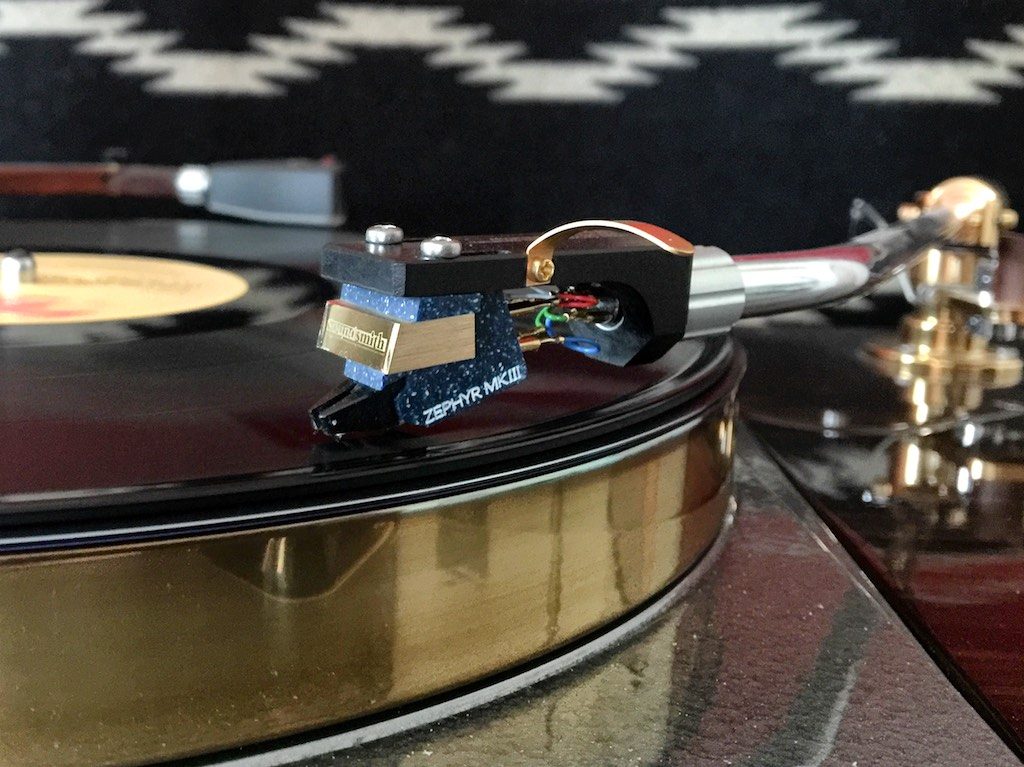
The new Soundsmith Zephyr Mk III phonograph cartridge on the CTC Classic 301.
A quality high-output phonograph cartridge like the Carmen or Zephyr reduces complexity and expense, and sounds fantastic.
How much have I used my Ortofon SPU & SUT combination since I got the Carmen and Zephyr? Hardly at all.
Like Sebastian used to say, the KISS principle is important. I recommend his "Keep It Simple Sebastian" approach to life as a way to maximize your benefit from audio too.
Length of Run-In Time
The last key audio insight for 2019 that I'm going to share with you is the length of run-in time.
Typically in audio 100 hours is considered to be the benchmark for the amount of run-in time needed to get the full measure of an audio component.
That's not a bad general rule of thumb for run-in, and some components will sound great in that amount of time.
However, it is not unusual for audio components to not hit their full stride until they've hit the 500 - 600 hour mark of operational time, or longer.
Current examples of that lengthy run-in time phenomena I've experienced were with the Pass Labs XA25 Class A stereo power amplifier, and the Oto Phono SE Signature, which both went through a step-change in their performance as they got close to the 500 hour mark.
As another example, the Duelund CAST capacitors, inductors, and resistors in my crossovers have kept improving over a period of years. First there was a big change as they got a typical amount of run-in time on them, and then they improved more subtly - but steadily - as thousands of hours accumulated.
The moral of the story is to be patient, and make sure your equipment and cables get lots of run-in time on them before making any final assessments of their performance.
Music Discoveries in 2019
Somewhat to my surprise, two of my three favorite music discoveries for 2019 weren't jazz, but classical.
The first 2019 music discovery I want to mention is the Legendary Masters of the Piano long out of print LP box set, that I had heard some positive buzz about, so I picked up a copy to check it out.
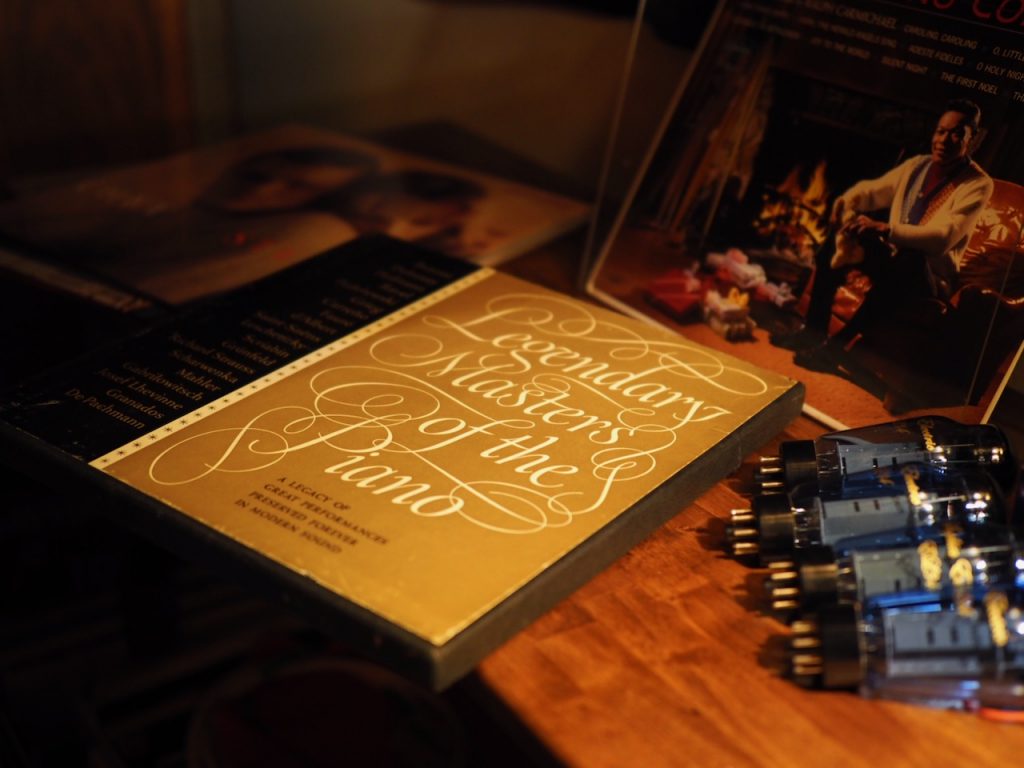
Legendary Masters of Piano
It features astonishing live performances by twenty great piano masters, including Busoni, Debussy, Hofmann, Ravel, Paderewski, Grieg, Carreño, Fauré, d'Albert, Saint-Saëns, Leschetizky, Scriabin, Grünfeld, Strauus, Scharwenka, Mahler, Gabrilowitsch Lhevinne, Granados, and de Pachmann.
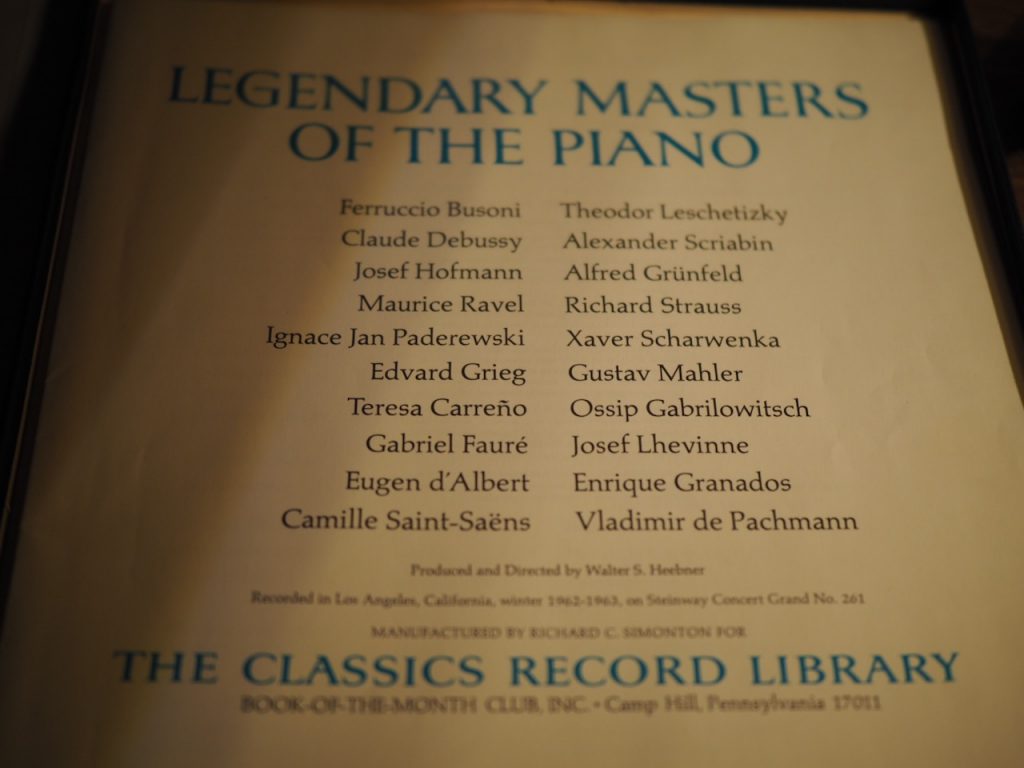
Legendary Masters of the Piano
What! How is that possible? These were recorded circa 1905!
It turns out that Herr Edwin Welte of Freiburg, Germany, developed one of the most amazing recording devices ever constructed, the Welte piano which cleverly recorded everything played on it in astonishing quality, the details about which you can read in box set's accompanying booklet.
Pianist Josef Lhevinne said about it, "I have today, after making a concert tour of the United States, for the first time heard the compositions which I played for Welte reproduced upon the Welte Player with absolute accuracy as to tempo, touch, and tone quality, and with exact gradation of expression. In fact, it reproduces my exact interpretation of the compositions which I played as above noted".
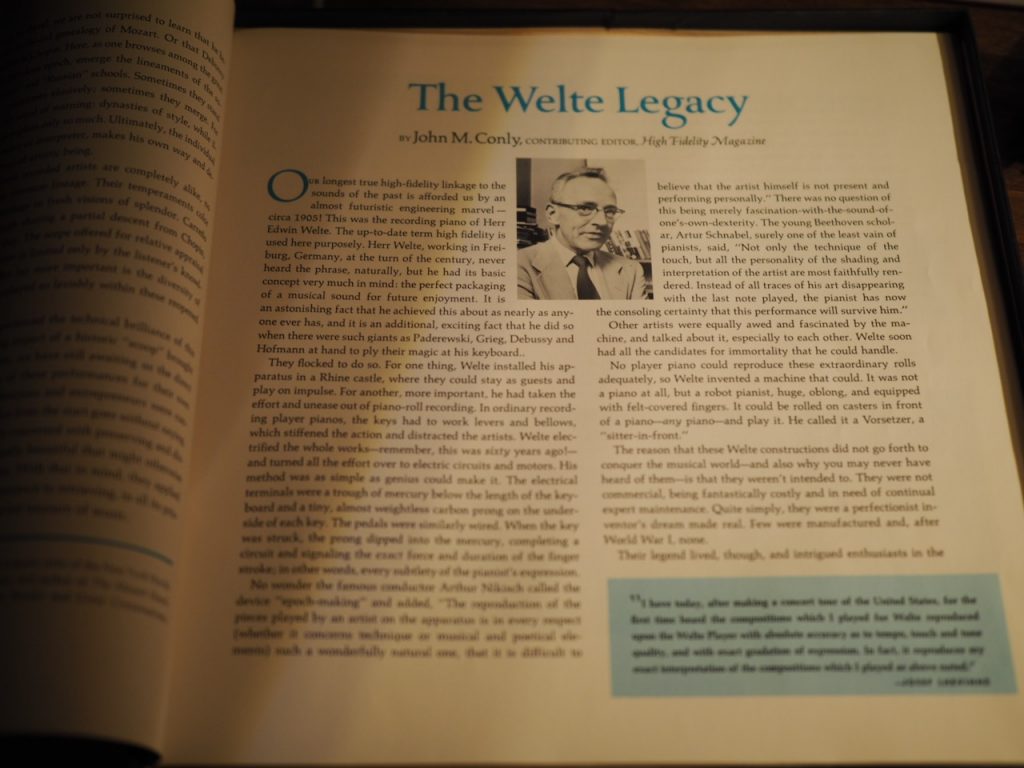
Legendary Masters of the Piano
"... Welte installed his apparatus in a Rhine castle, where they could stay as guests and play on impulse ... such giants as Paderewski, Grieg, Debussy and Hofmann at hand to ply their magic at his keyboard ..."
Word got around about what Welte had accomplished with his piano, and great pianists flocked to the Rhine castle so they could put their hands to the keyboard of the Welte Player.
What you hear on this box set are the compositions they actually played on the Welte Player, and they are stunning.

CTC Garrard 301
Have you ever heard a grand piano in your living room played by a great pianist?
I have, well not in my living room, but in my friend Ron Barbee's living room, with his wife, Sumie, playing compositions not unlike what's on Legendary Masters of the Piano, and well, with the Oto providing the juice, that's what it sounded like listening to Legendary Masters of the Piano in my living room over the "Stokowski" Altec's.
Simply amazing! The price of this glorious box set, the Legendary Masters of the Piano, start at about $7 USD on Discogs in "near mint" condition. Truly an unheralded gem!
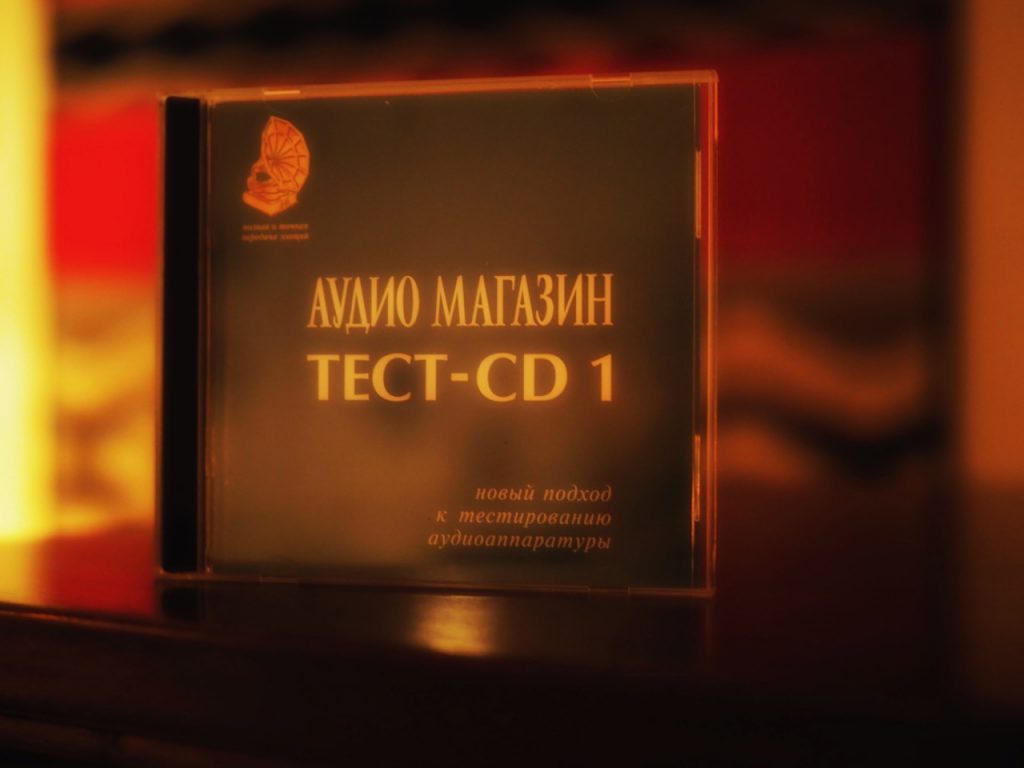
Audio Magazin (The Hi-Fi Journal) Audio Test CD
My second discovery was from the Chief Wizard of Audio Note UK, Peter Qvortrup. This is not just any ordinary CD, and it's not available on the Audio Note UK music web site (HERE), but I wish it was, as it is perhaps the most mind-blowing test CD I've ever had the pleasure to listen to, it truly has lit up my evenings with the electrifying excitement of exquisite musical performances from my AV system!
If you're having trouble making out the language on the CD, that's because most of it is in Russian, as it was produced as a test CD for Audio Magazin (The Hi-Fi Journal), the first Russian audio publication about "hi-fi, high end and the appreciation of music." Those last three words are key to what this CD is about.
The people of Audio Magazin have amazingly good taste, as this is easily the best test CD I have ever heard, and if you can find a copy, buy it, you won't be disappointed. Oh how I wish this was available on vinyl too, as it would get constant play on my turntable at audio gatherings at Jeff's Place, as well as just for sheer listening pleasure. This test CD would sell like hotcakes if ever issued on vinyl - I can dream!
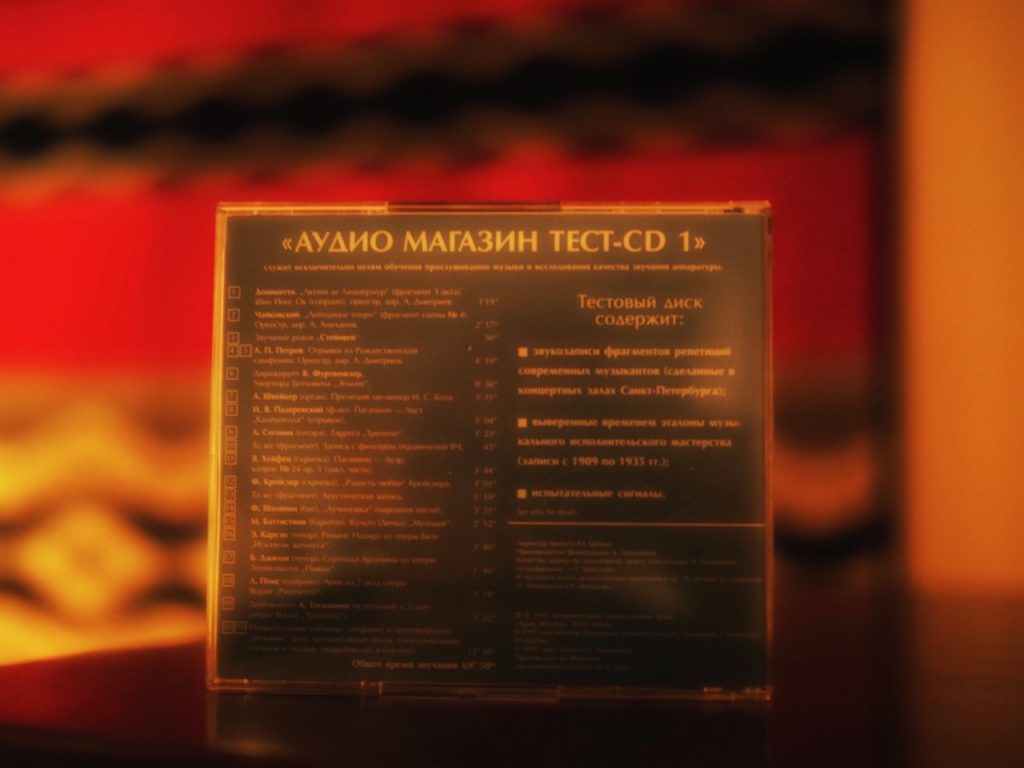
Audio Magazin (The Hi-Fi Journal) Audio Test CD
One of the most fascinating aspects of this CD is that many of the "tests" are exquisite musical performances, and of course there are the obligatory and useful test tracks to help you get your system dialed in.
The test CD is arranged into three sections, the first being "The Sound of Sound" (the first five tracks), featuring purist recordings and customized recording equipment, with the intent being "These tracks are real stereo spectaculars, offering natural sound stage, precise imaging, beautiful tonal color and all the goods you can get from ANY modern recording, audiophile quality or not."
The second category is "The Sound of Music" (tracks 6 -19), which is described as "... the ultimate example of great musicianship of the artists long gone, but never forgotten. Painstakingly remastered from original recordings on custom designed equipment. The performances are, of course, stunning. But you will be absolutely amazed of the sound quality! (I was! - Jeff) This was made possible by a completely new approach to remastering, carefully preserving every emotional nuance. Simply unrivaled!"
The third category is "The Sound of Test Tones" (tracks 20 - 70), and feature a "useful selection of tones to check whether your speakers are correctly wired and properly interacting with your room. Some tones and noise signals may be used for precise measurements of your audio equipment technical specifications. (Be careful not to play the test signals on high levels, because in some cases it may damage your speakers.)"
"No digital editing, noise reduction or any time domain tampering was applied during the preparation of music of this CD."
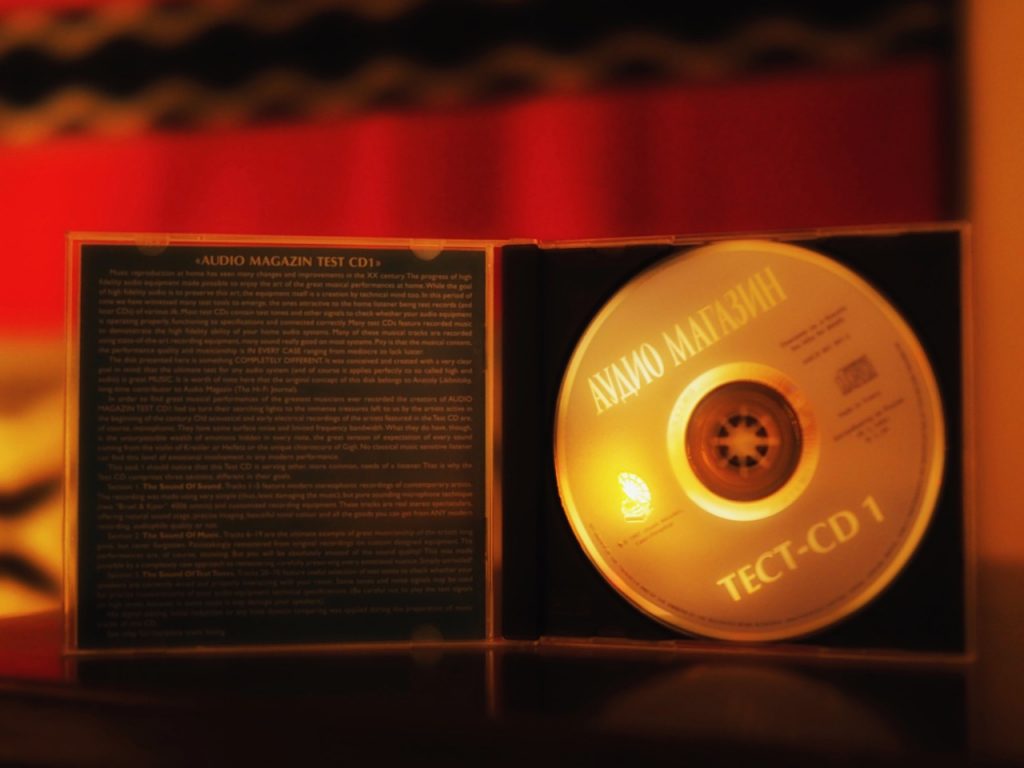
Audio Magazin (The Hi-Fi Journal) Audio Test CD
I haven't yet mentioned the most fascinating aspect of this CD, which is its great music that includes, "... the immense treasures left to us by the artists active in the beginning of the century. Old acoustical and early electrical recordings of the artists in the test CD are, of course, monophonic. They have some surface noise and limited frequency bandwidth. What they do have, though, is the unsurpassable wealth of emotions hidden in every note, the great tension of expectation of every sound coming from the violin of Kreisler or Heifetz or the unique chiaroscuro of Gigli. No classical sensitive music listener can find the level of emotional involvement in any modern performance."
I might add that the original 78 recordings rpm records were from the collections of A. Likhnitsky and G. Mikaelian, who possess remarkably refined taste in music.
I don't know if you have ever heard the recordings on Classic Records where they compare the same song cut at 33 1/3 rpm on one side to one cut at 45 rpm on the other side. If you have heard these records you know there is a huge gulf in the quality between the two sides, vastly favoring the 45 rpm side.
The reason is that more data from the master tape gets laid down on a record cut at 45 rpm than at 33 1/3 rpm, and the difference is not subtle.
Well that's sort of the same thing that you find with these old 78 rpm records, which have abundantly more musical information encoded into their grooves than 33 1/3 and 45 rpm records, which from what I can hear, manifests itself as abundantly more emotional involvement relayed as the music plays.
One listen to this disc has me hoping for a 78 rpm record revival!
It also begs the thought of what if we were to record, or remaster, and make 78 rpm records today, incorporating the best ideas of audio history with the best ideas of today?
I'm sorry to tell you that this CD is not available at the moment, it is long out of print.
Peter told me that he sponsored the CD way back when, but there is good news, as Peter is looking at rereleasing this test disc "as a tribute to my friend Anatoly Likhnitsky who did the fabulous 78 transfers."
Definitely something to look forward to!
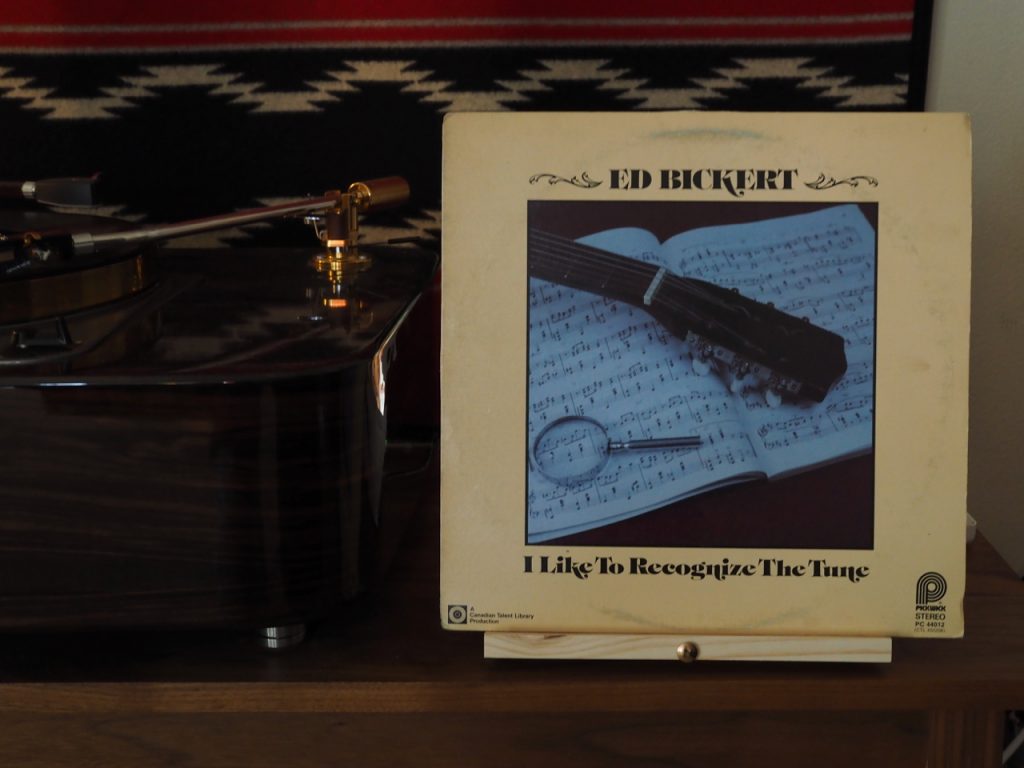
Jazz guitarist Ed Bickert.
The third music discovery of 2019 is pretty much anything by the late Canadian jazz guitarist Ed Bickert.
I wasn't familiar with Ed Bickert until my friend and jazz guitar teacher David Gitlen told me about Ed.
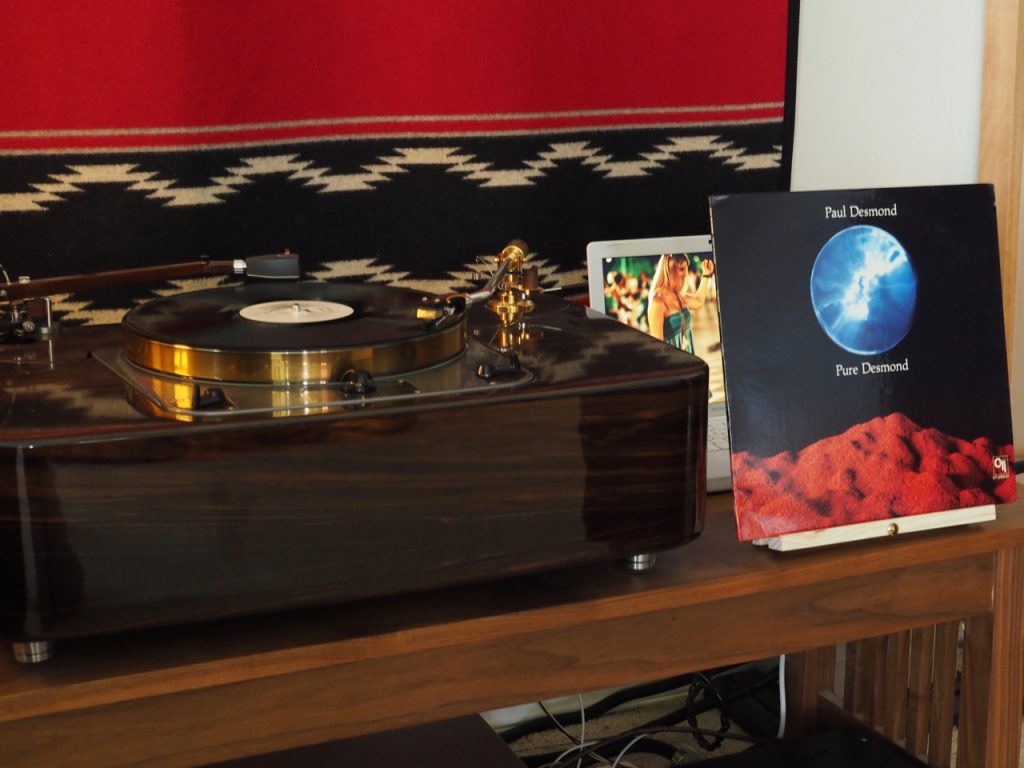
Paul Desmond's "Pure Desmond" with Ed Bicker on guitar.
One of the most remarkable things about Ed Bickert was his incredible jazz tone. Remarkably Ed achieved his gorgeous jazz tone from a 1964 Fender Telecaster with a Gibson humbucker pickup that he had installed in the neck position in lieu of the usual Telecaster pickup, along with his incredible technique, of course.
Every album I've heard with Ed Bickert on it has been phenomenal, so if you come across one be sure to buy it, you won't be sorry. Also, be sure to check out the YouTube videos of Ed Bickert playing jazz guitar.
Ok, that's it for 2019, my next Part 4 post will be in 2020, and I'll finish telling you about my 2020 New Year's Resolutions, what's coming up at Jeff's Place in 2020, and other cool stuff!
Oh, I almost forgot. Happy New Year's Eve from my home to yours, and may 2020 be your best year yet!
As always, thanks for stopping by, and may the tone be with you!





























